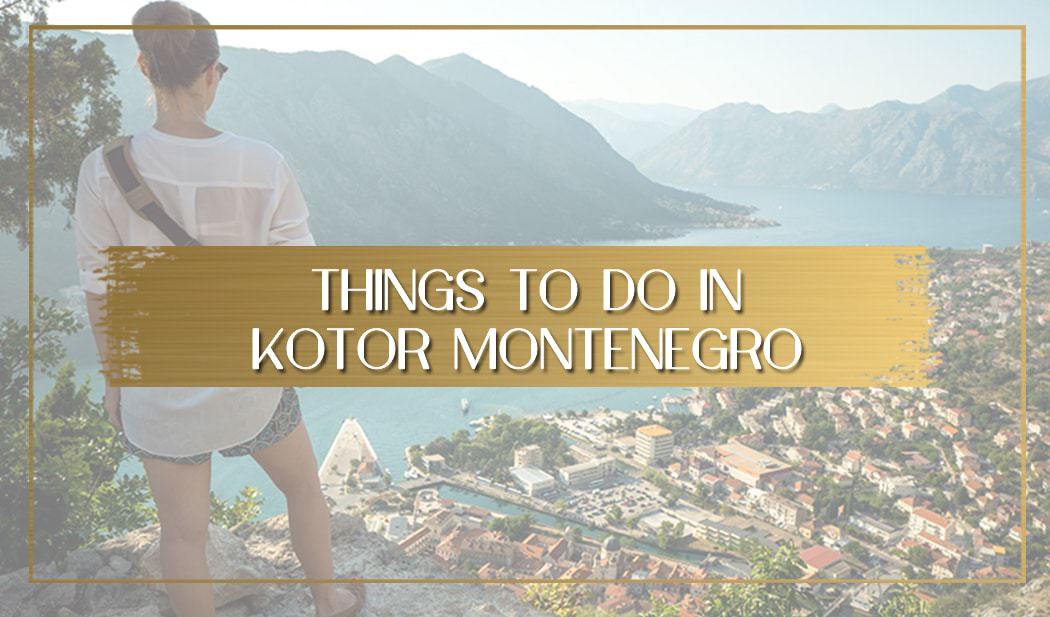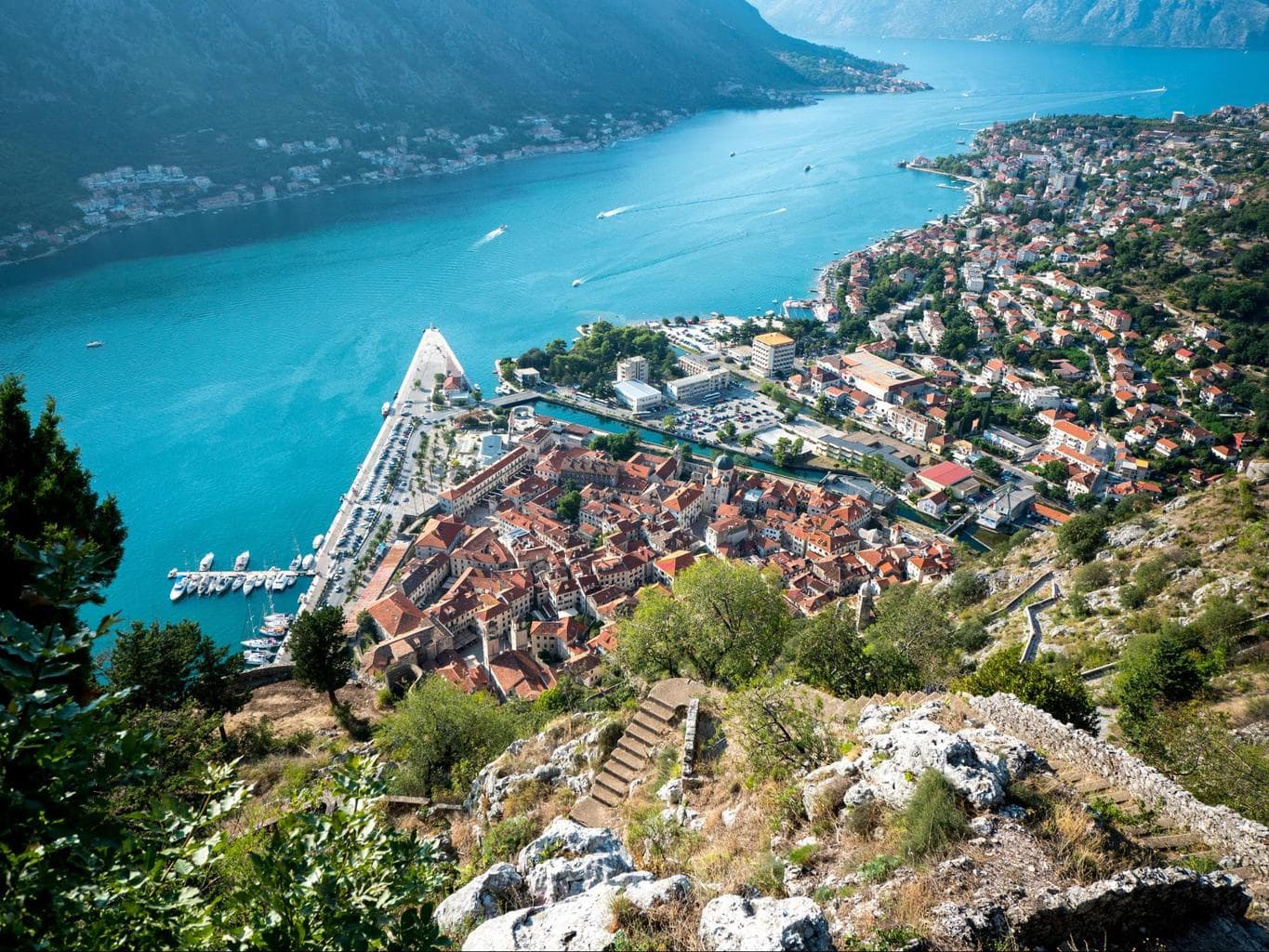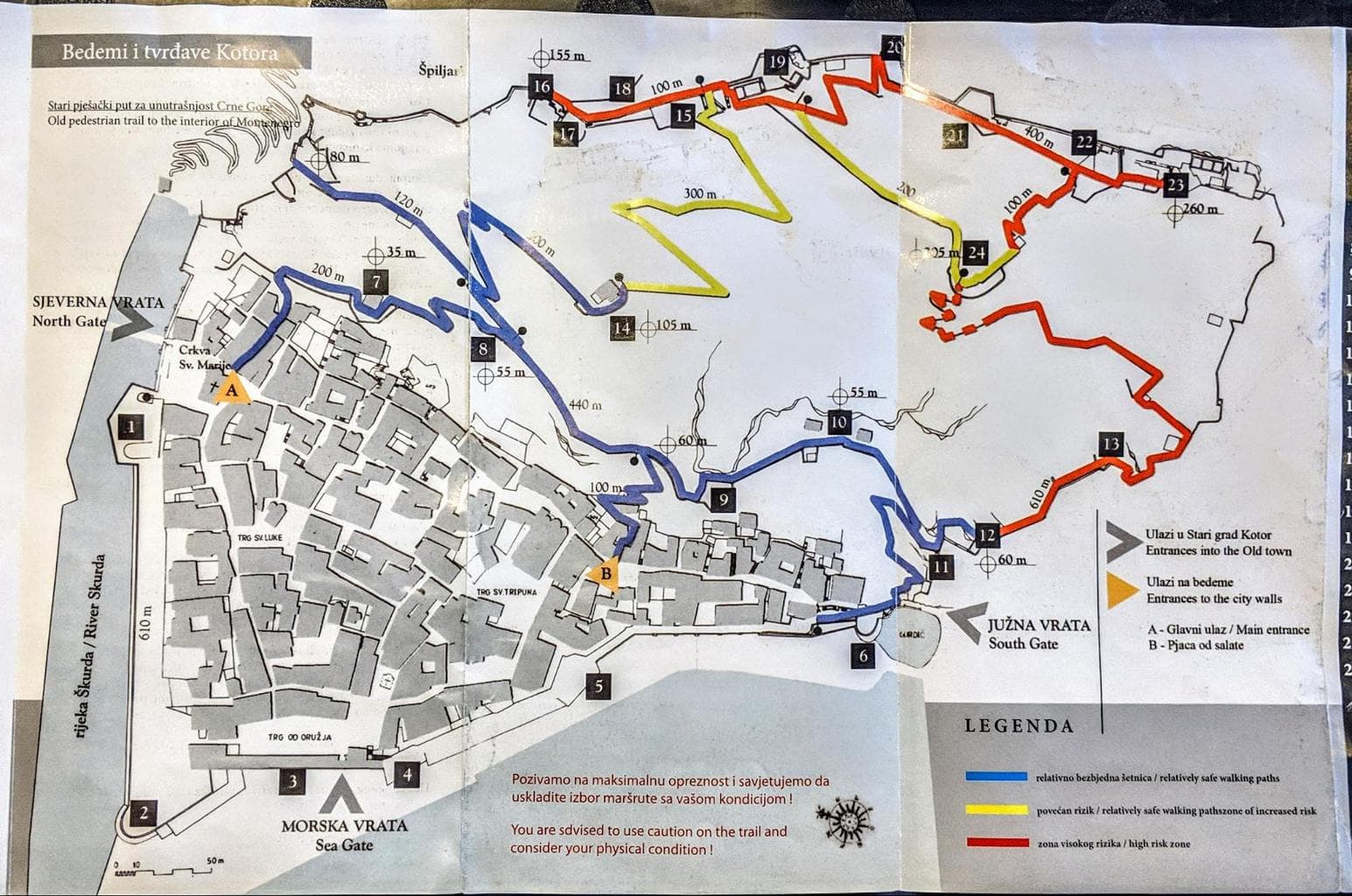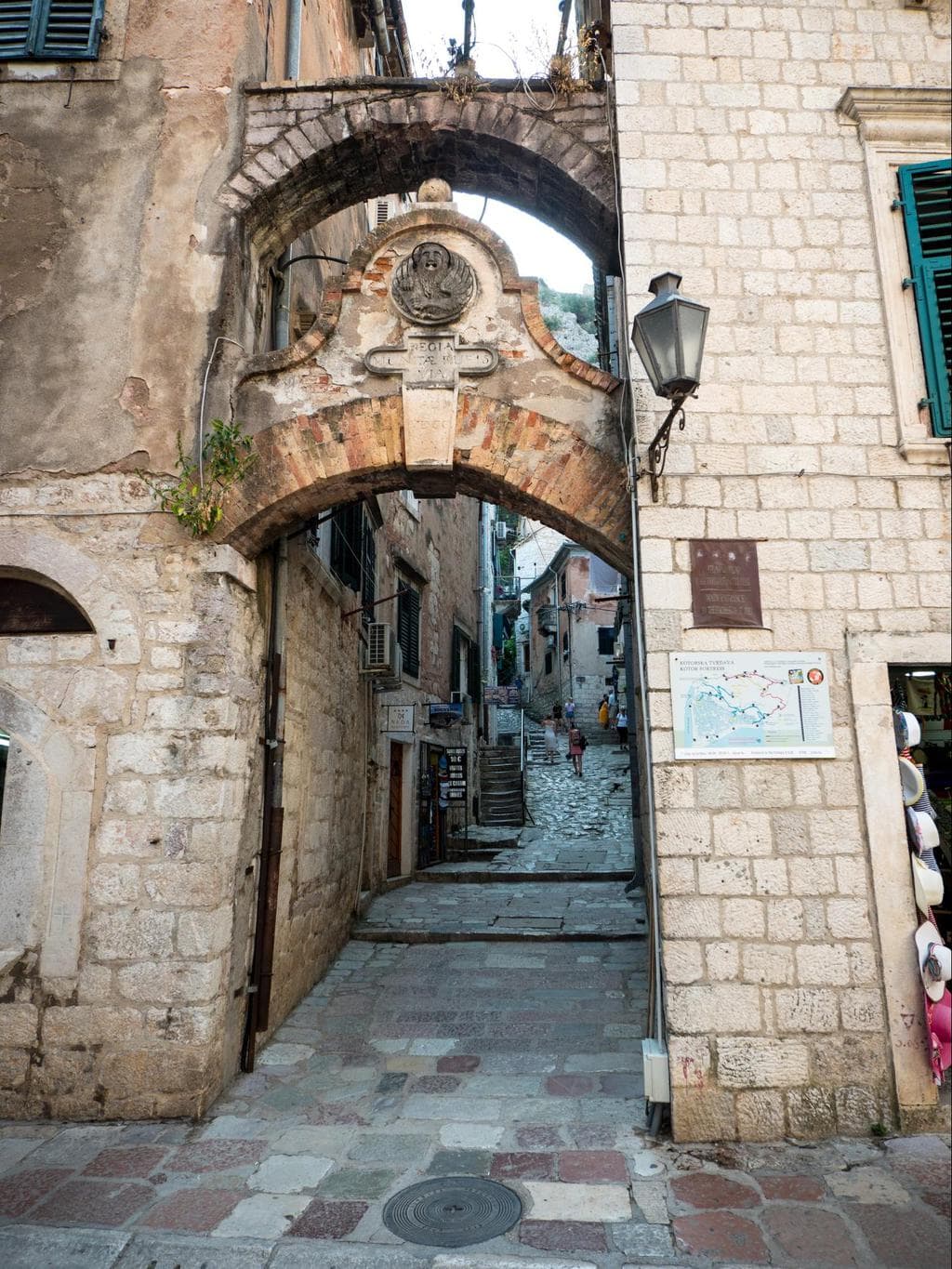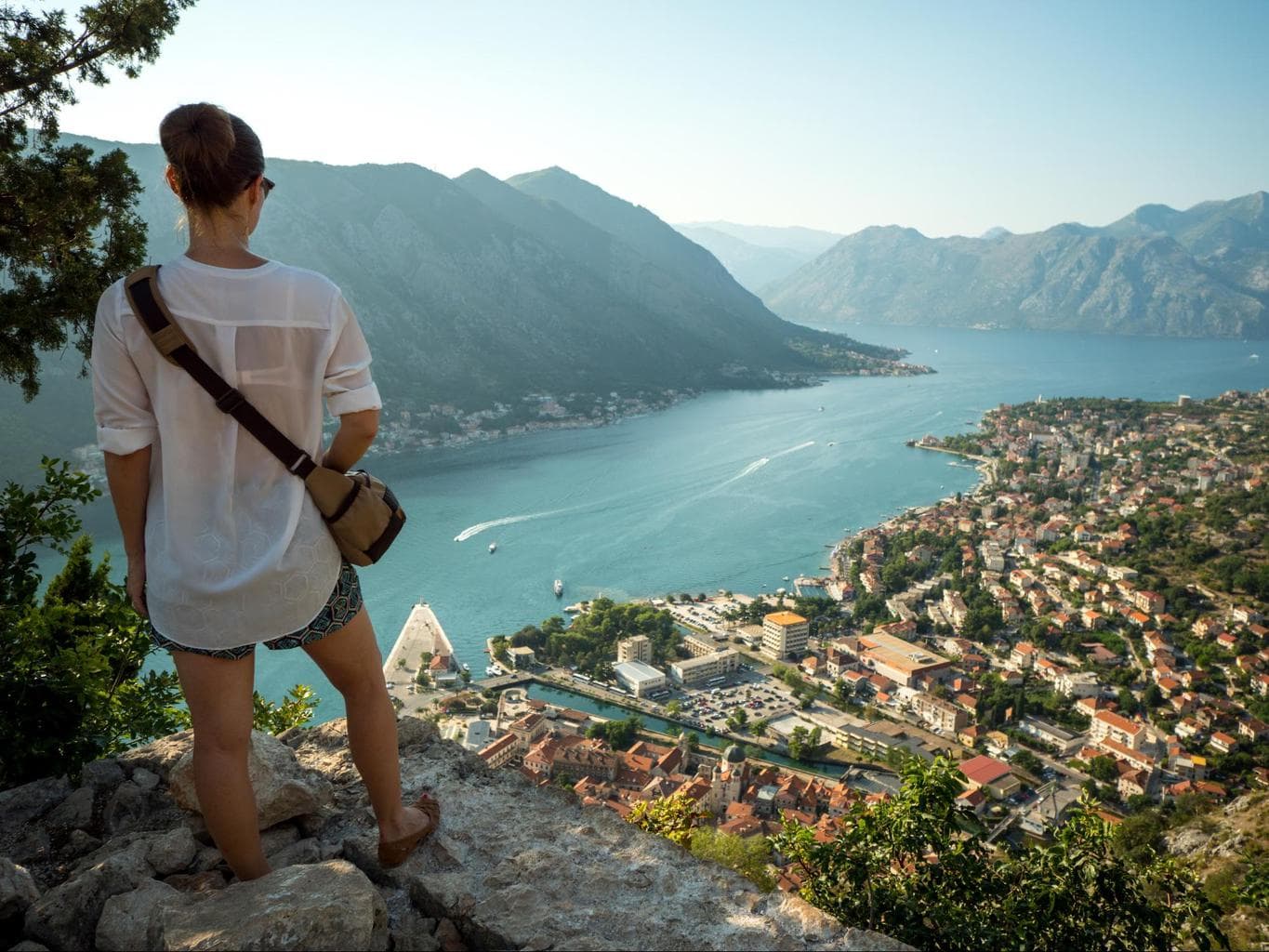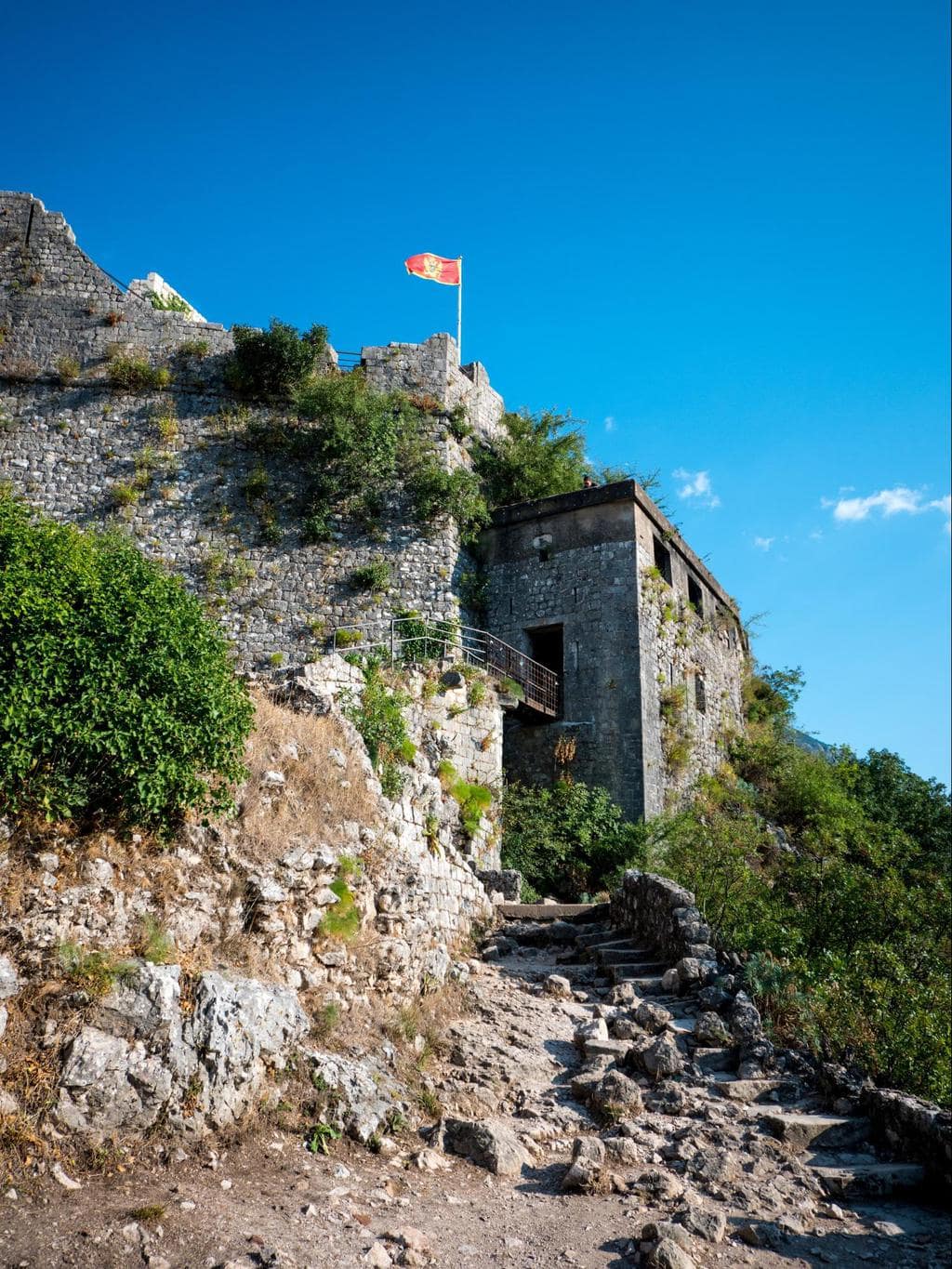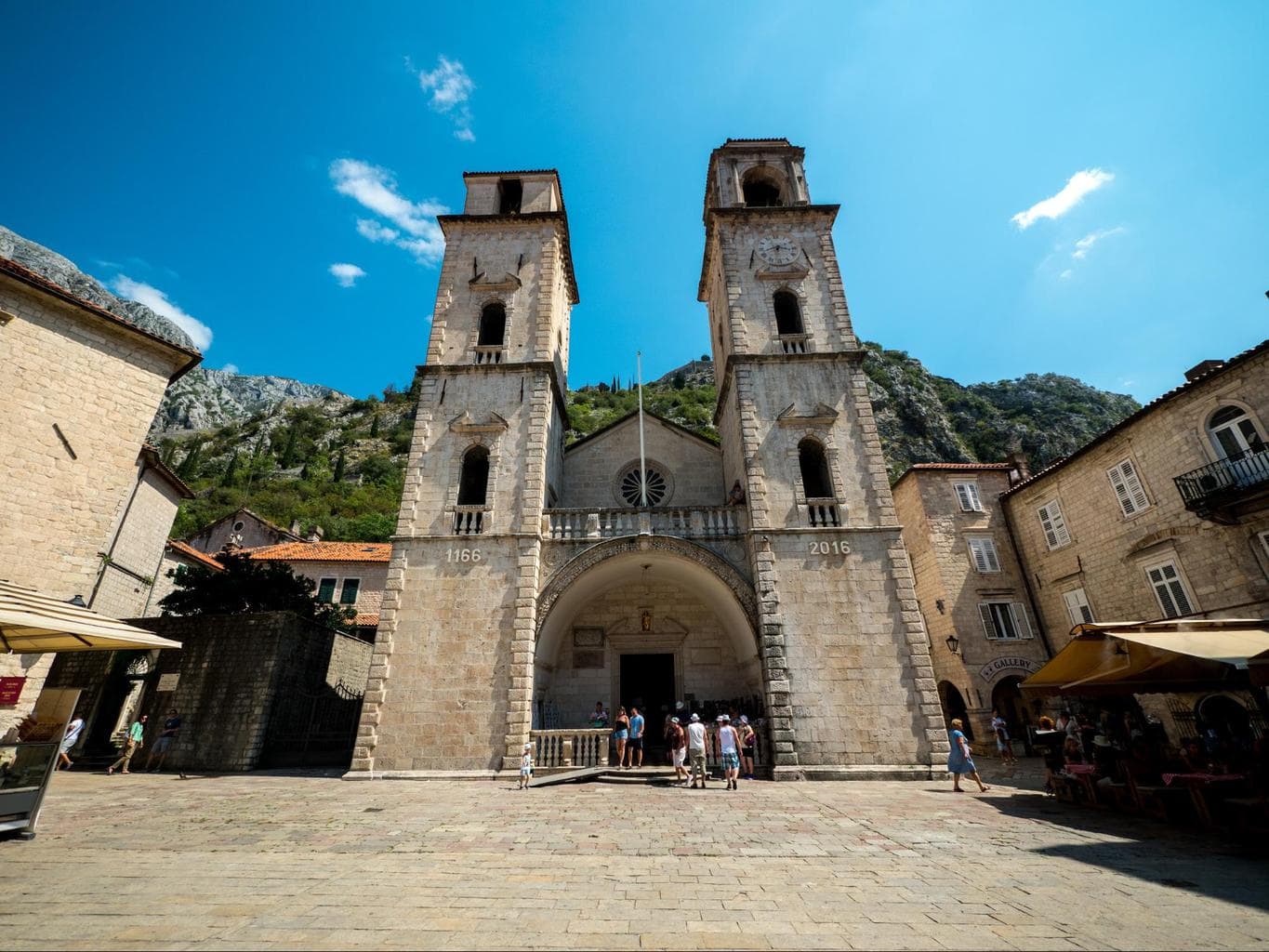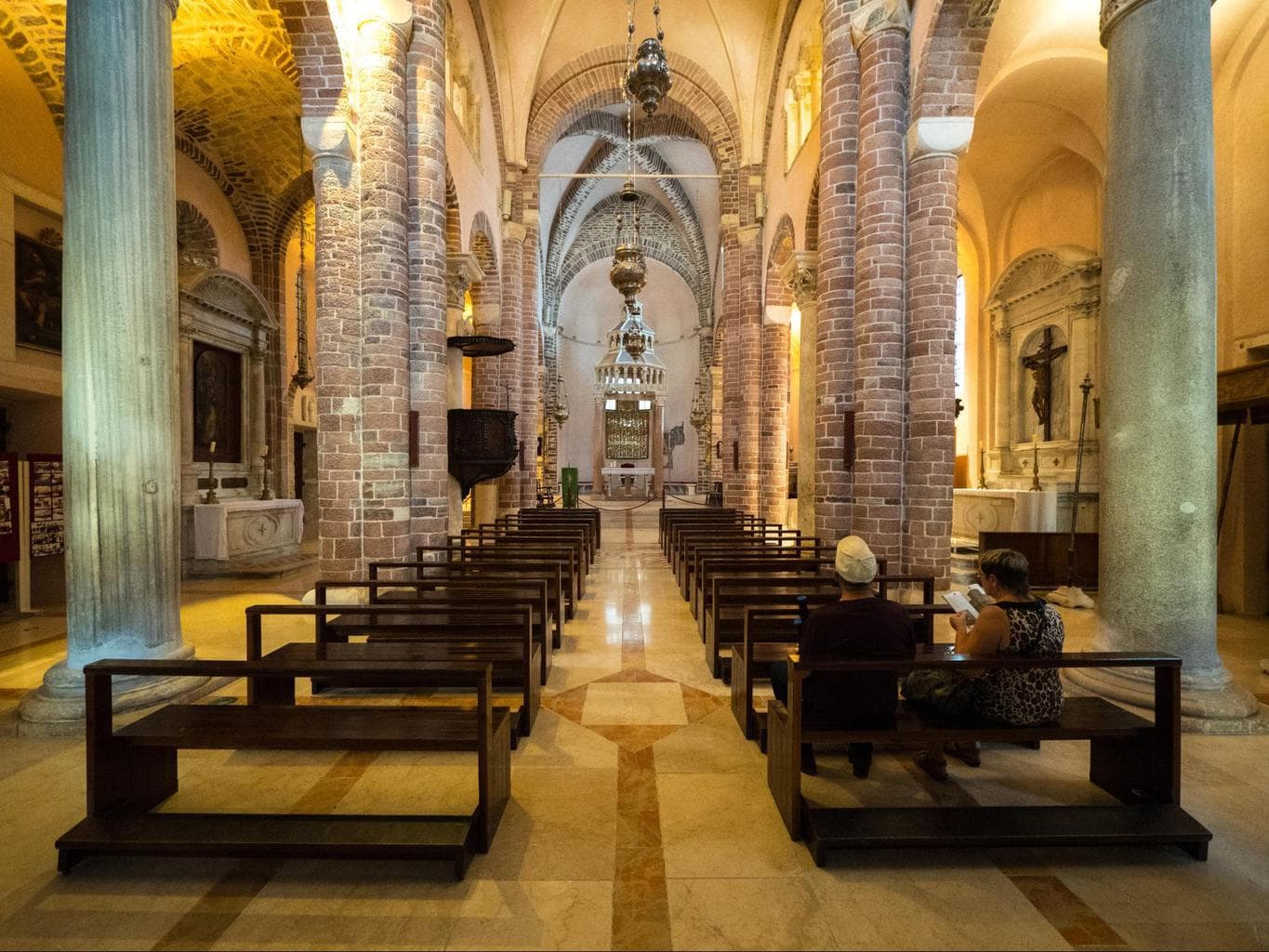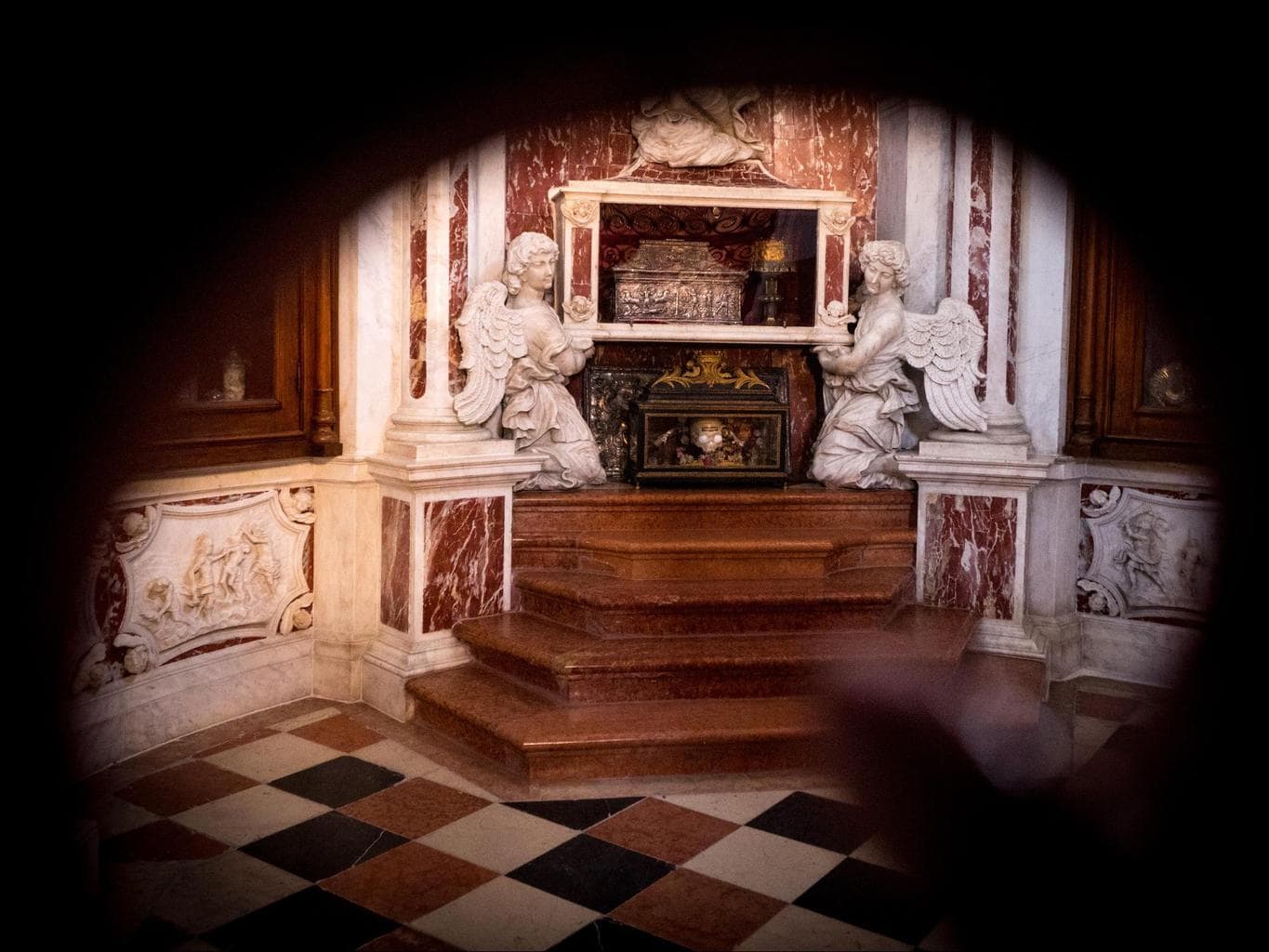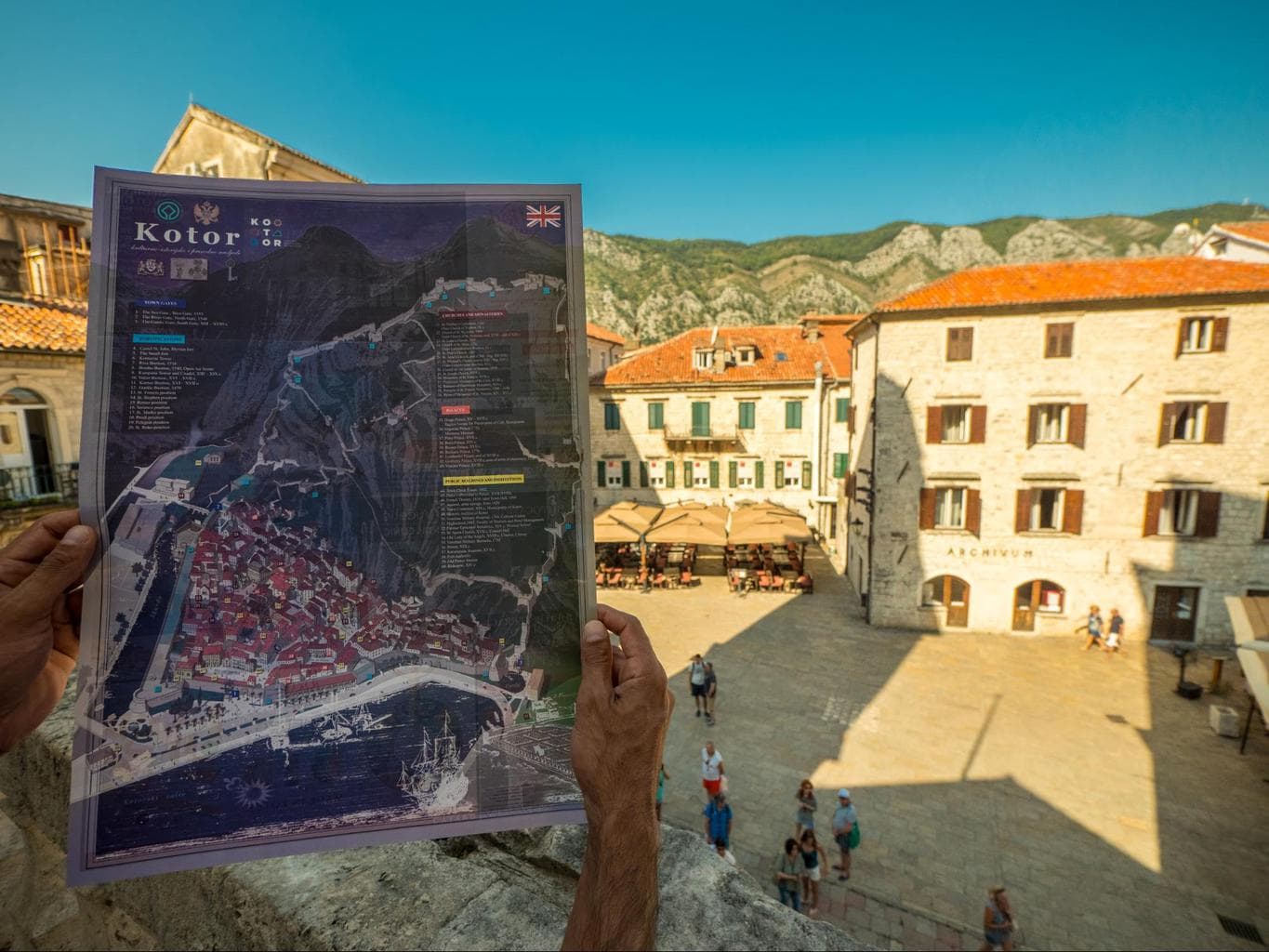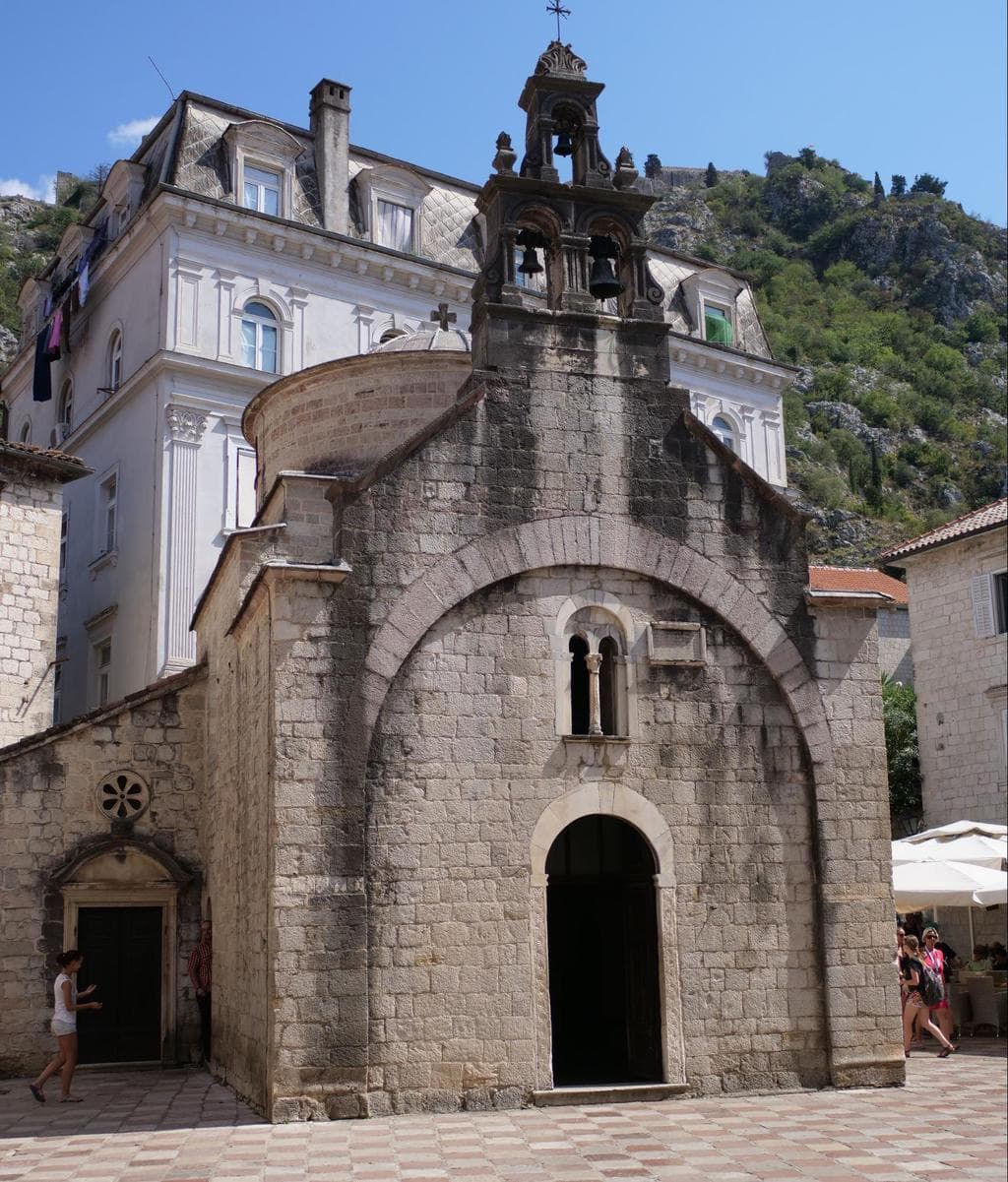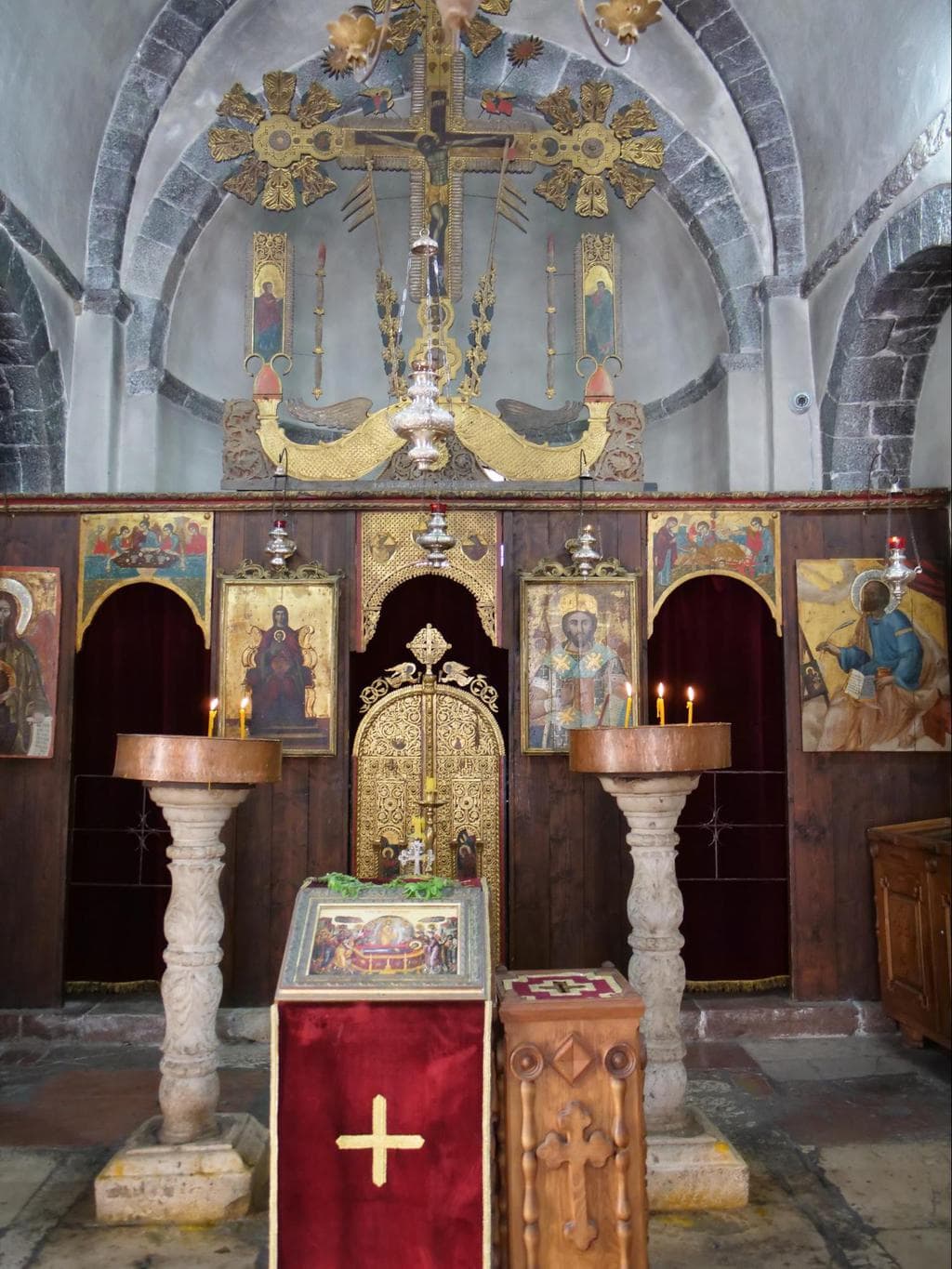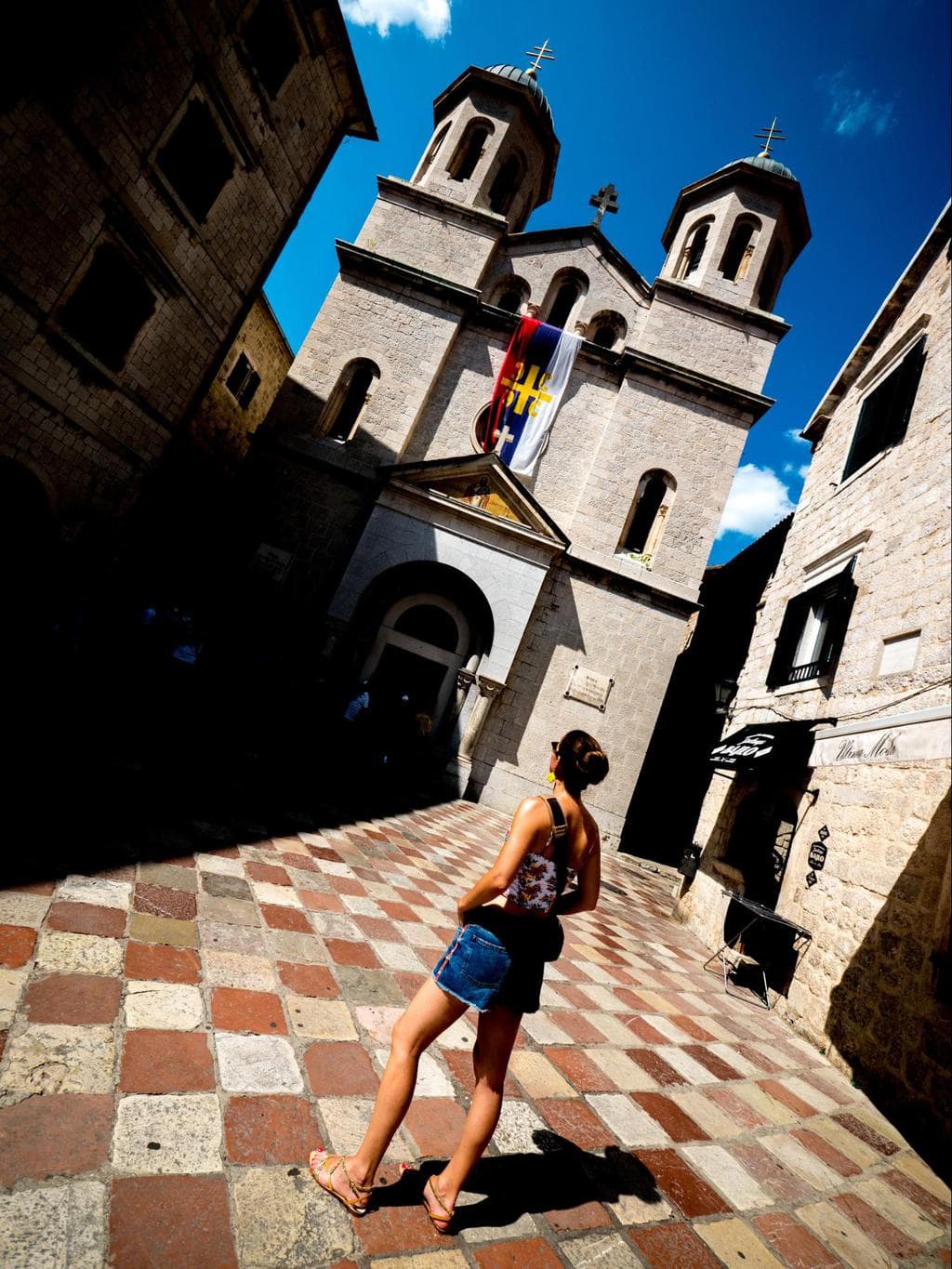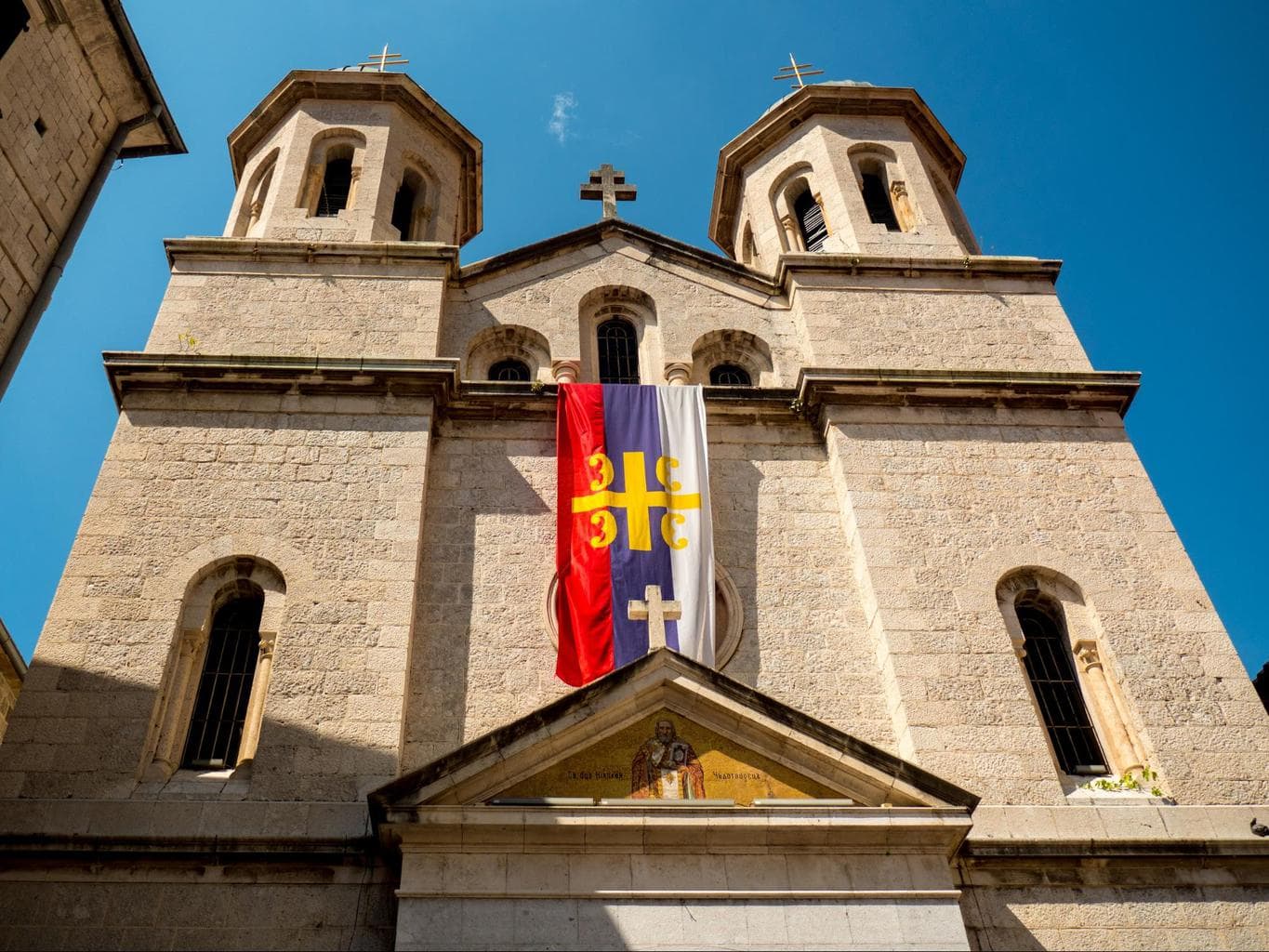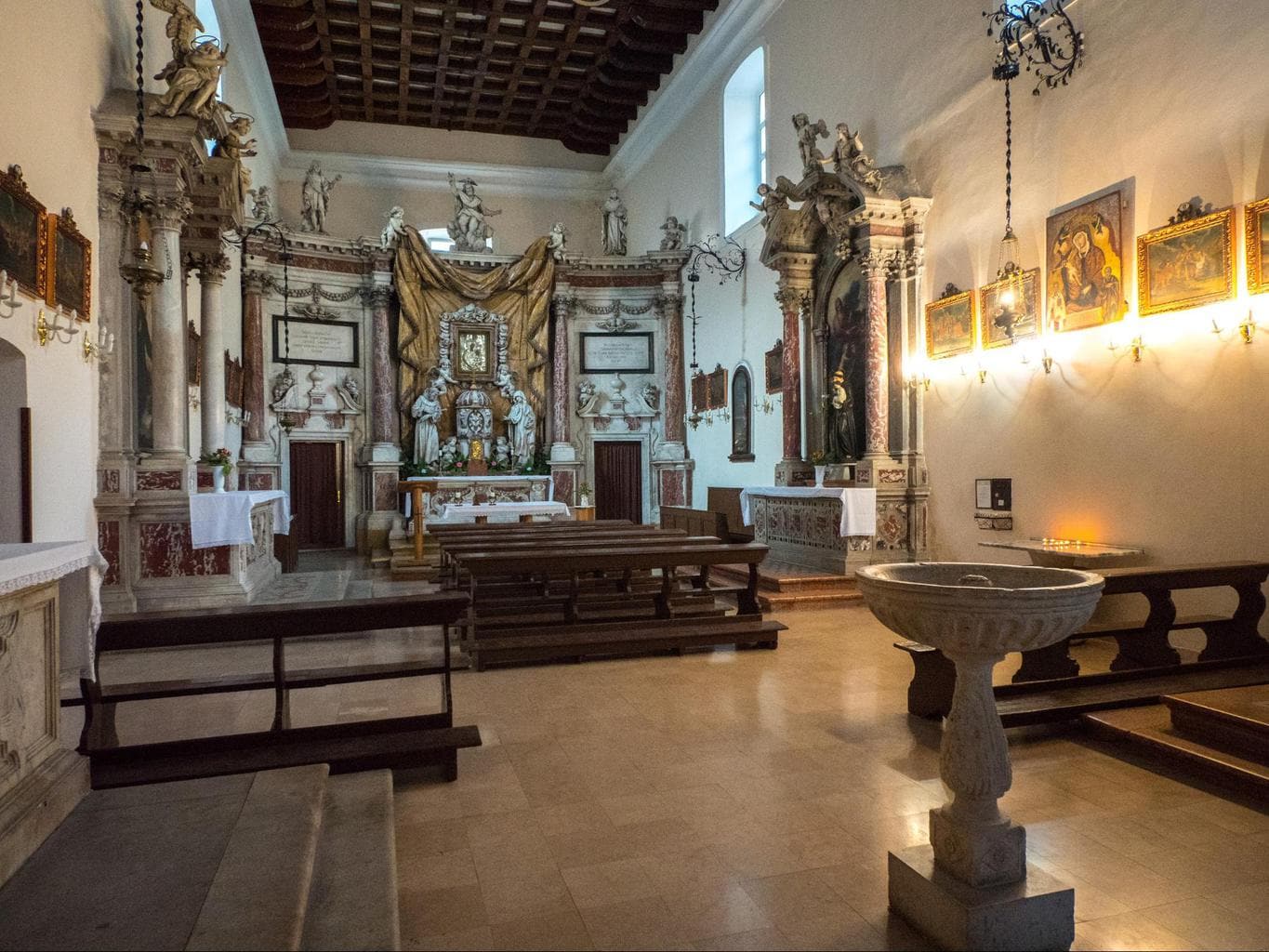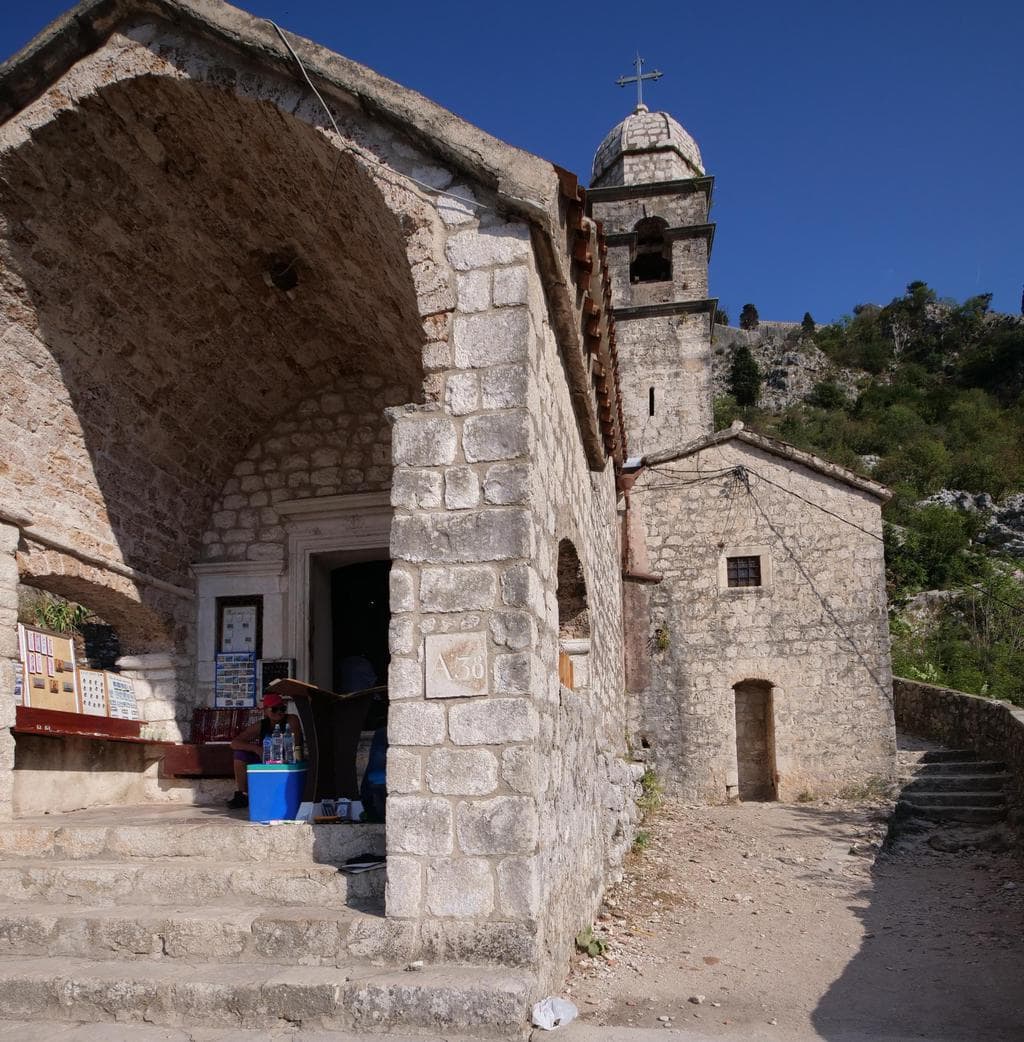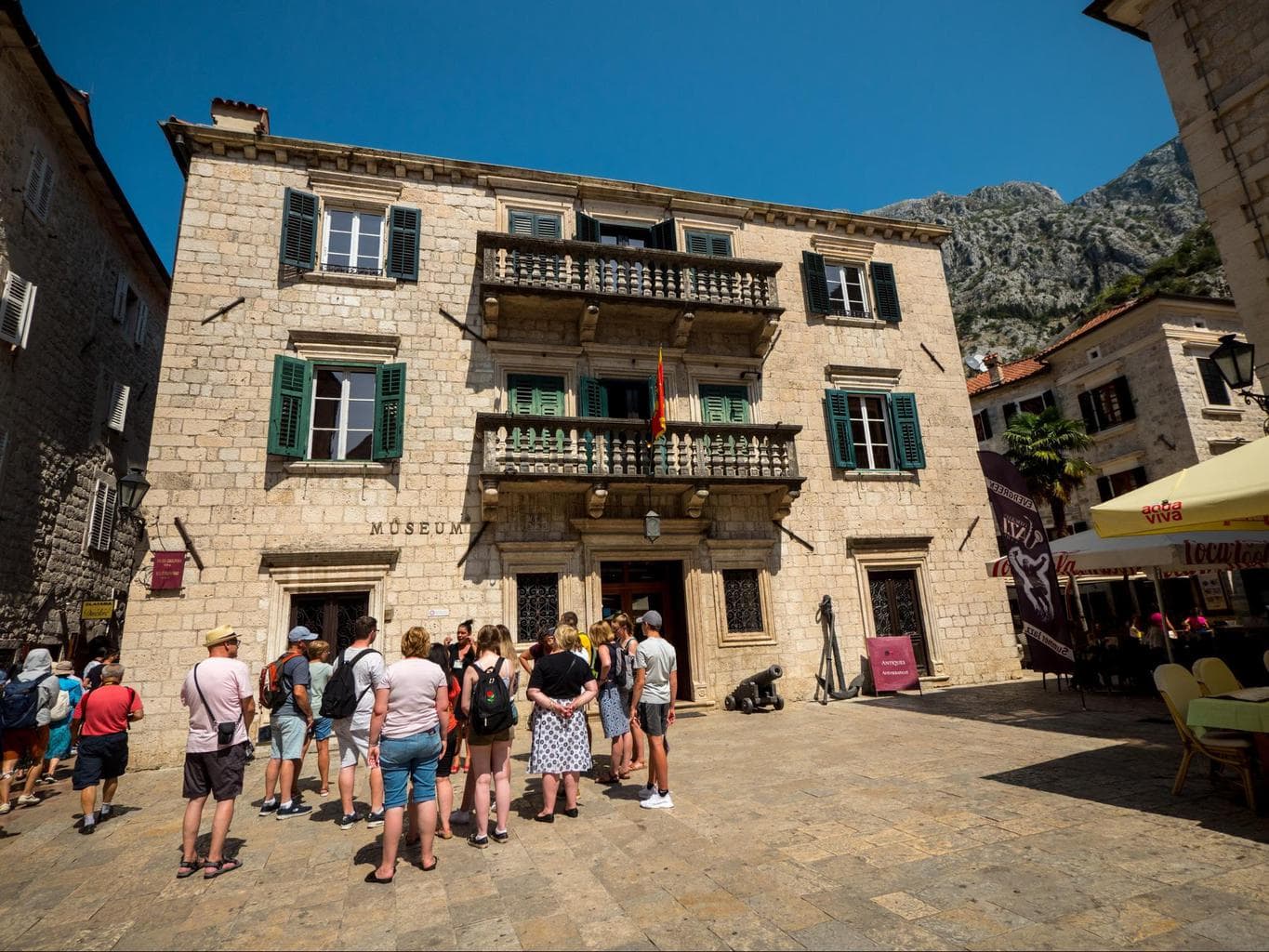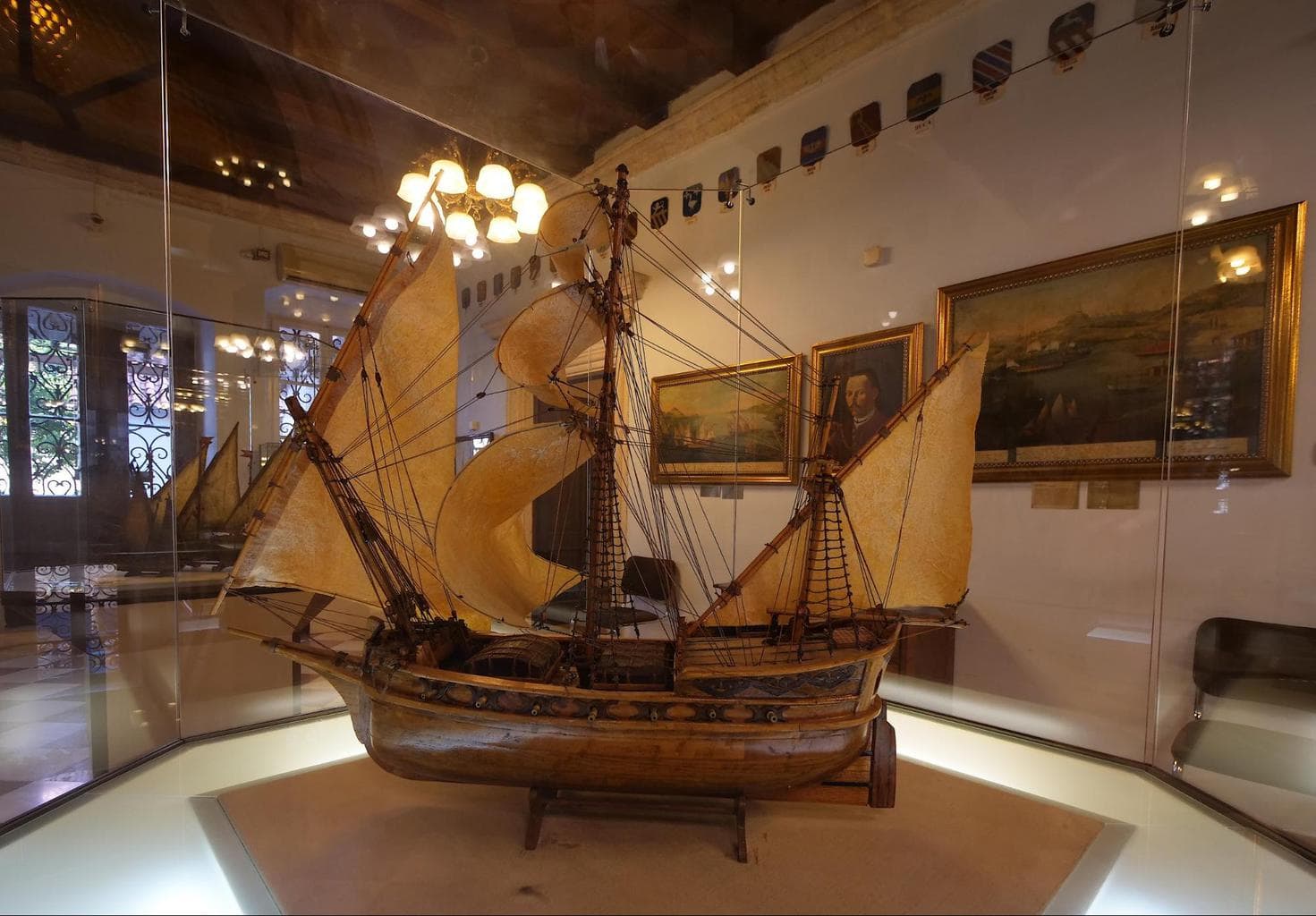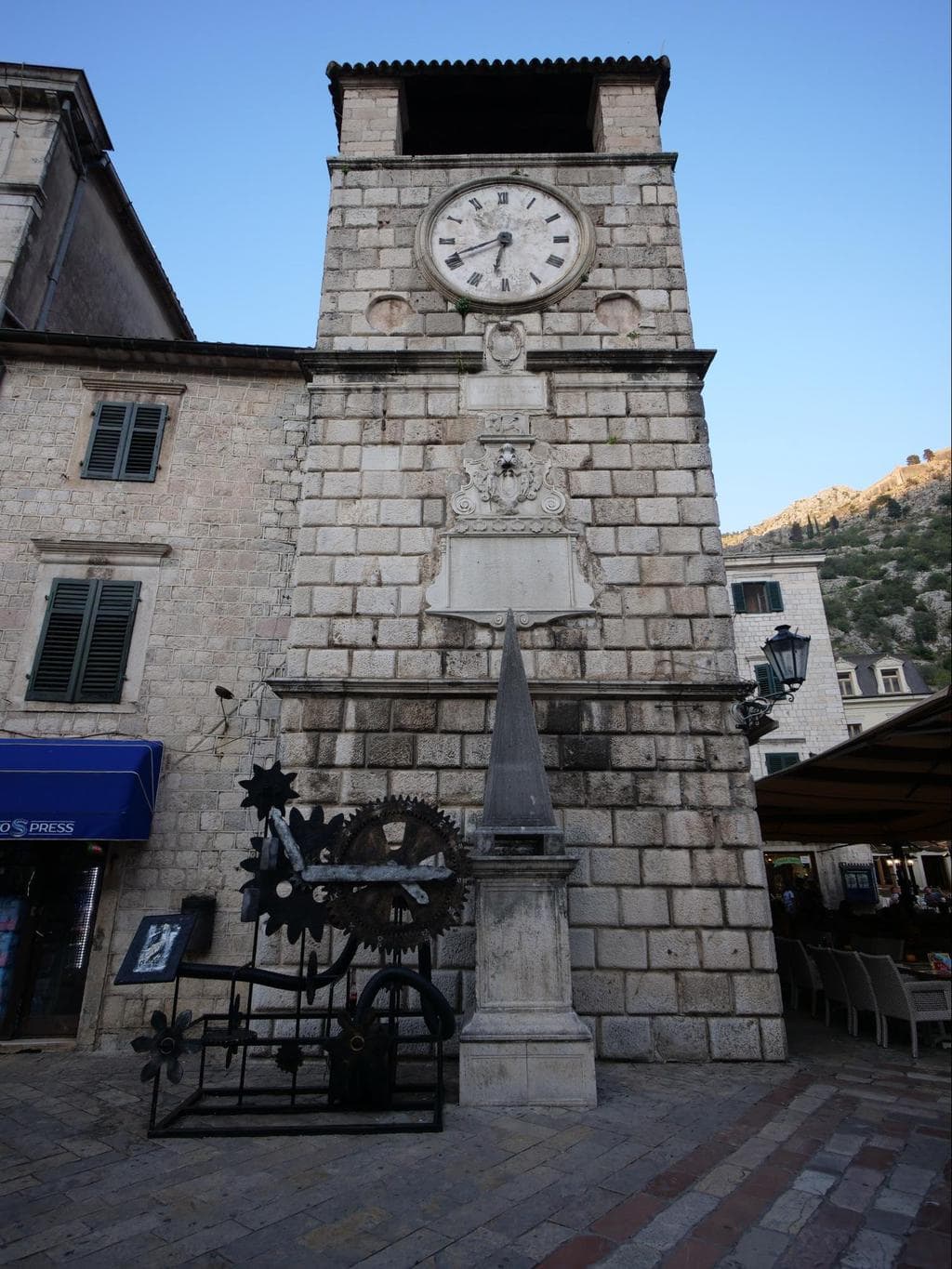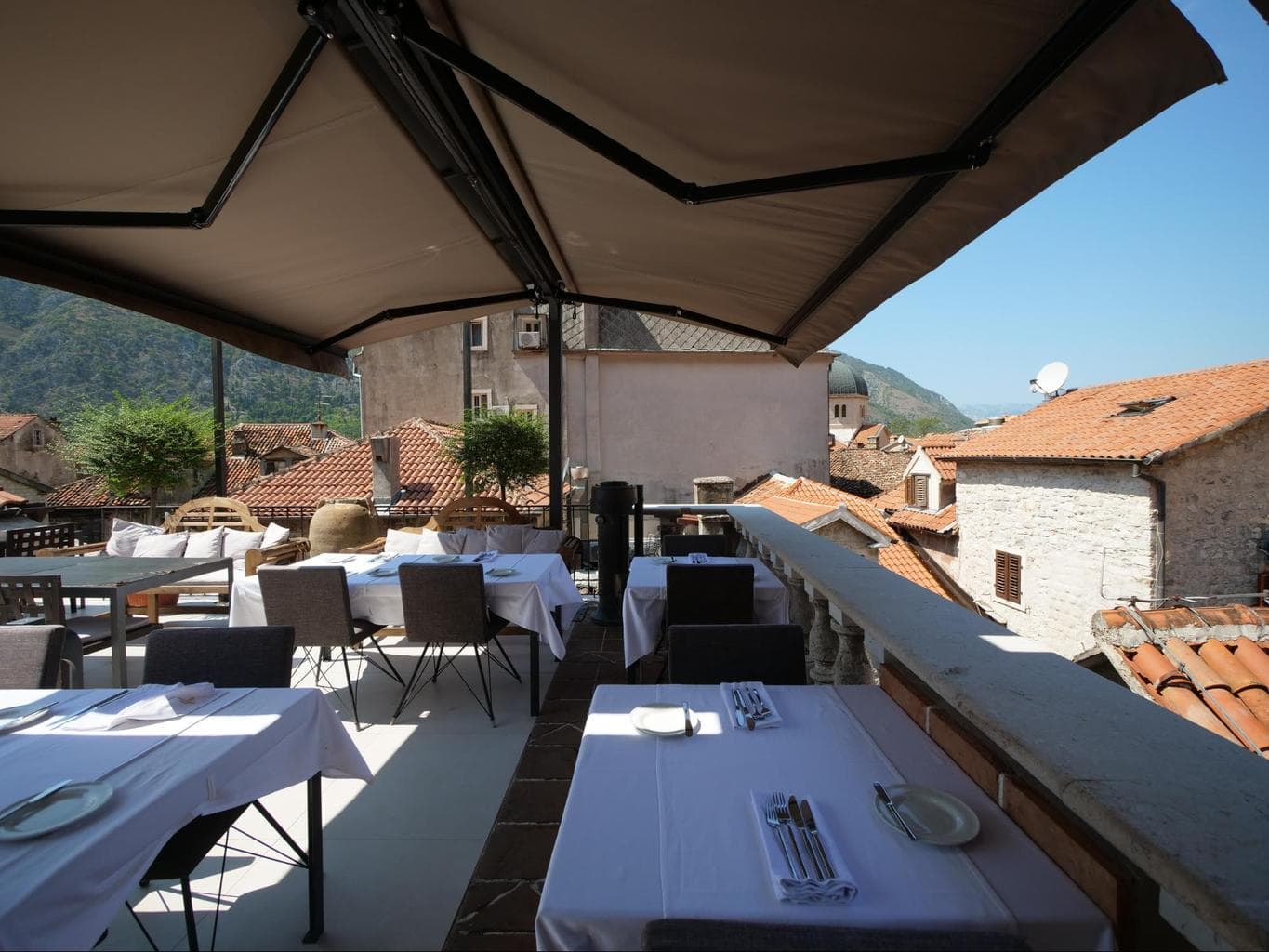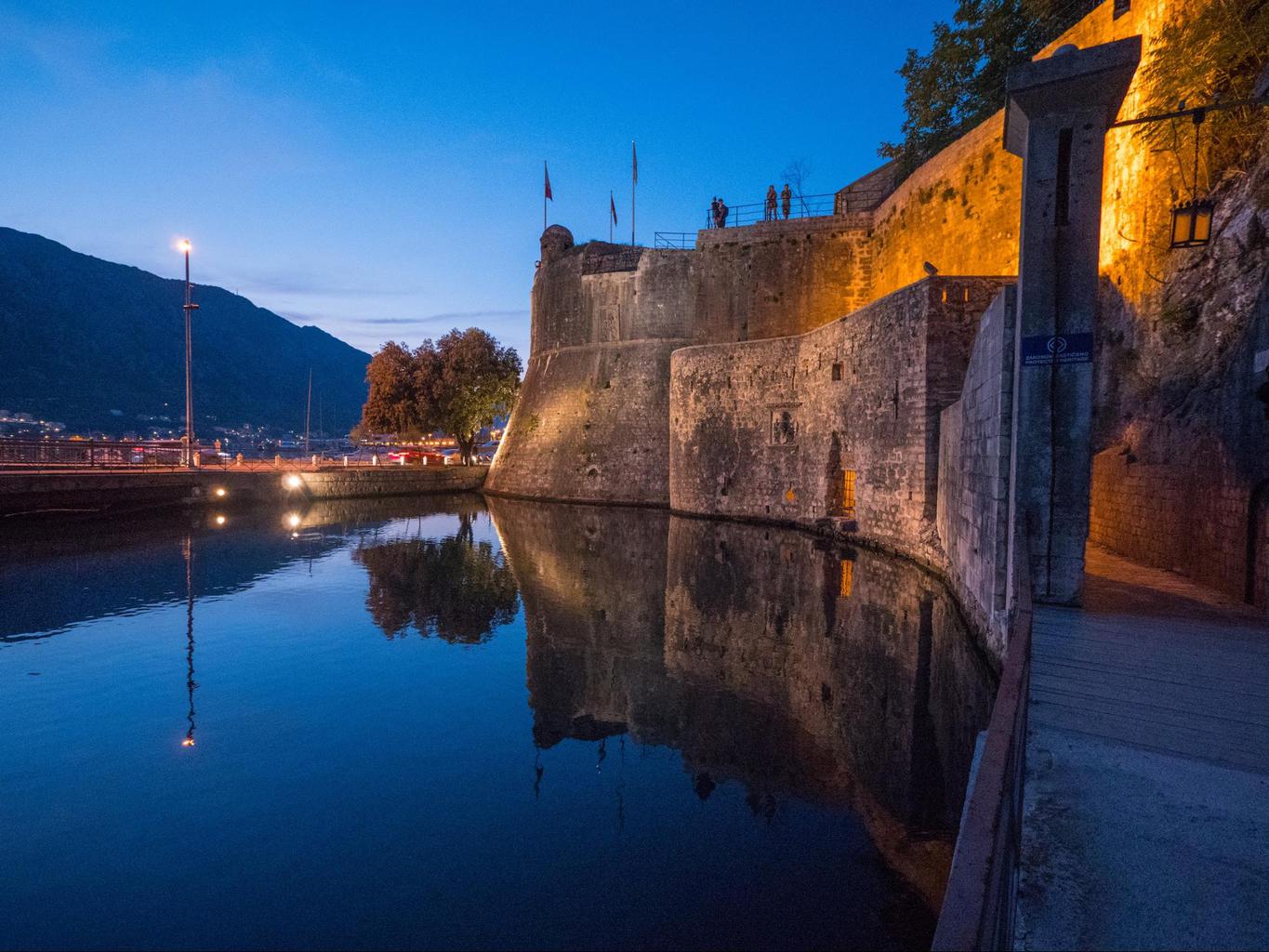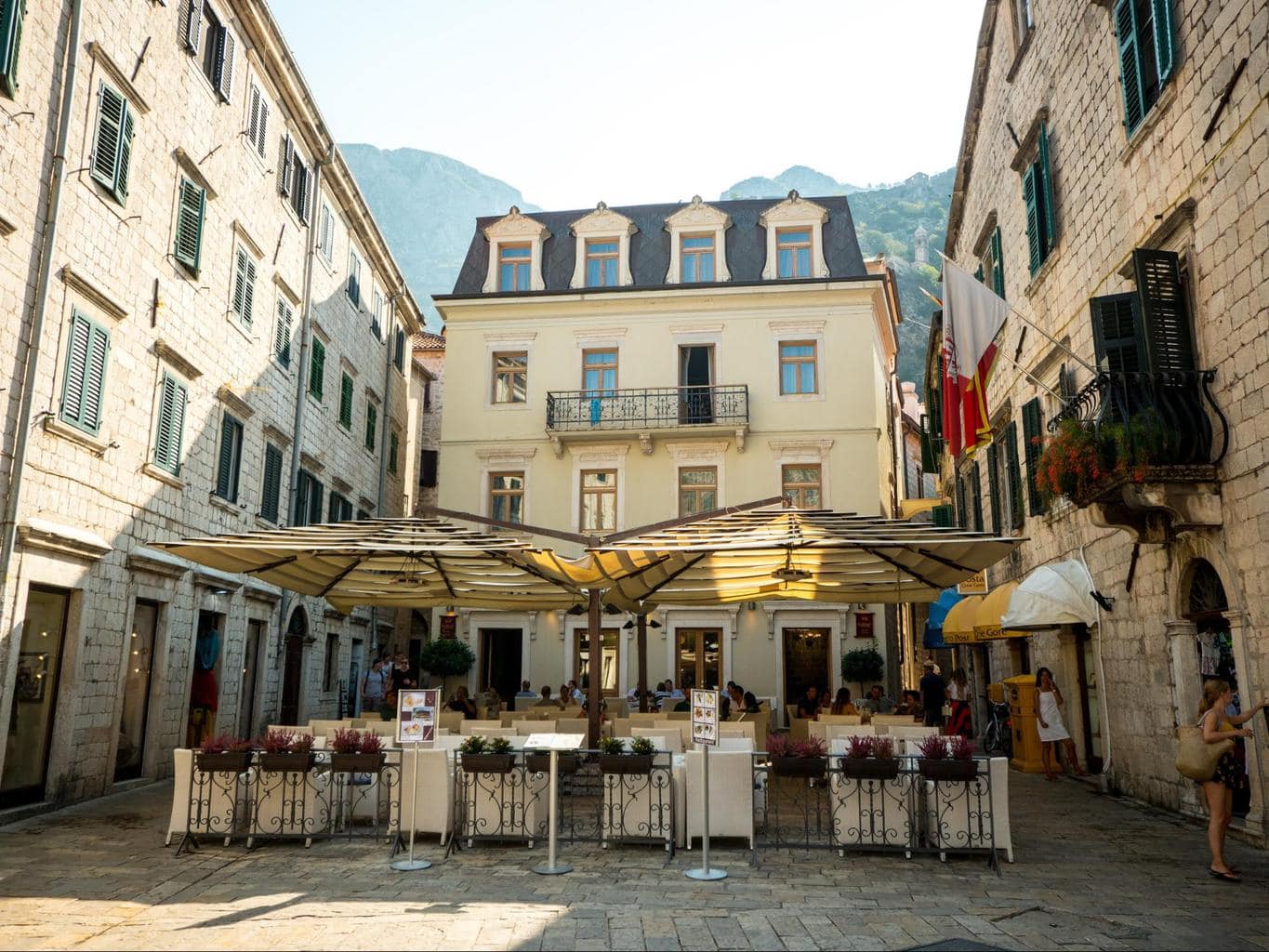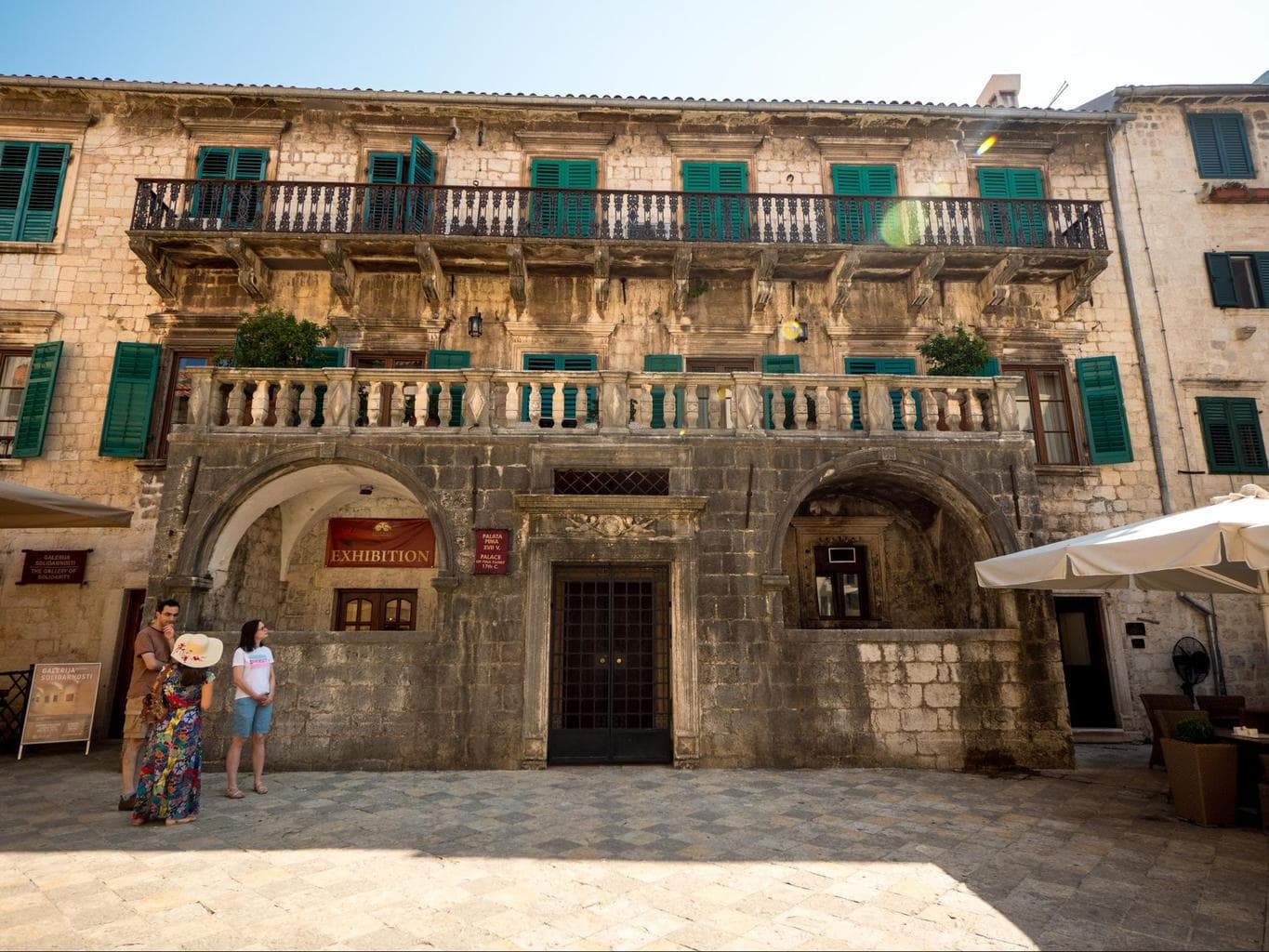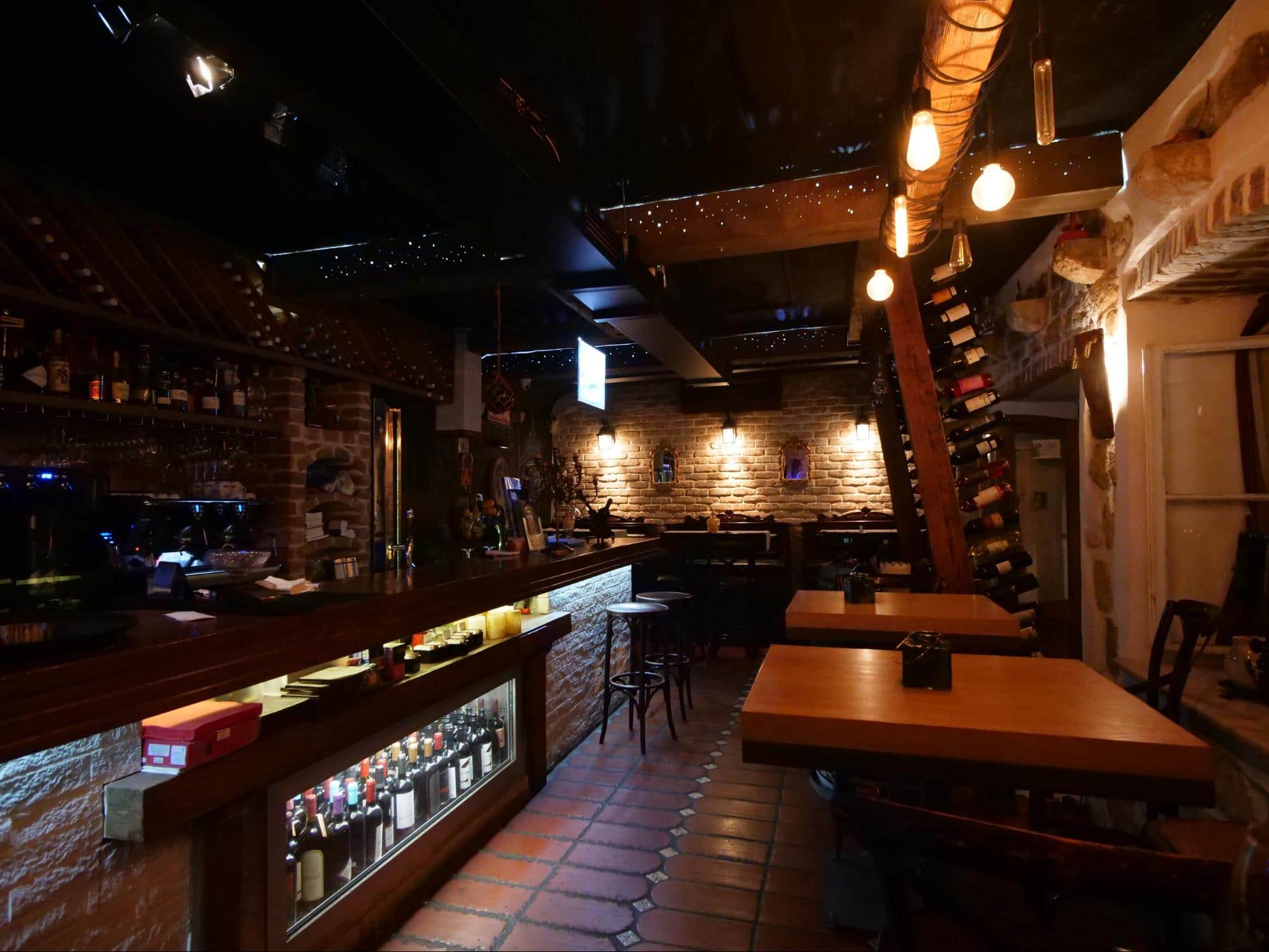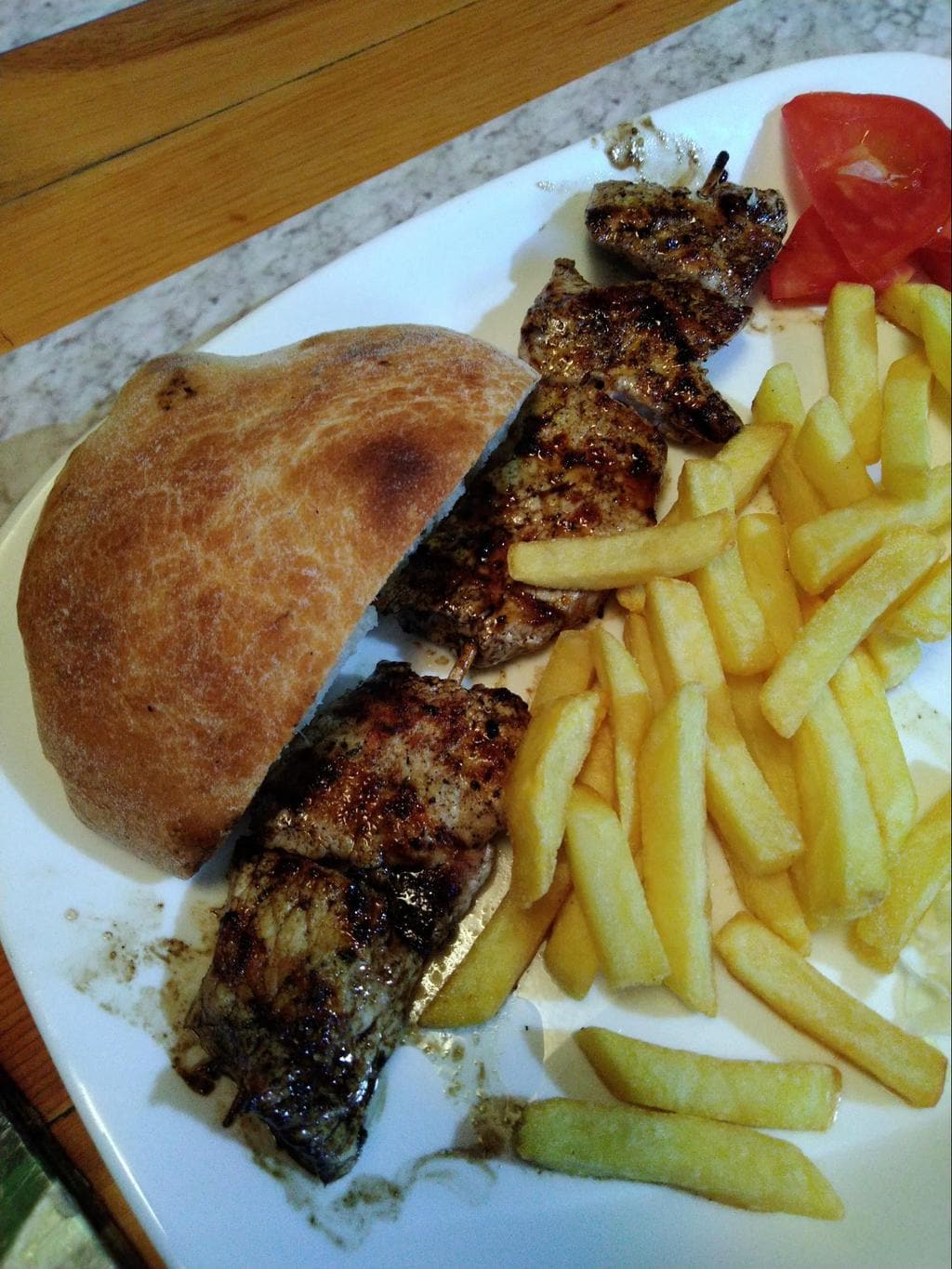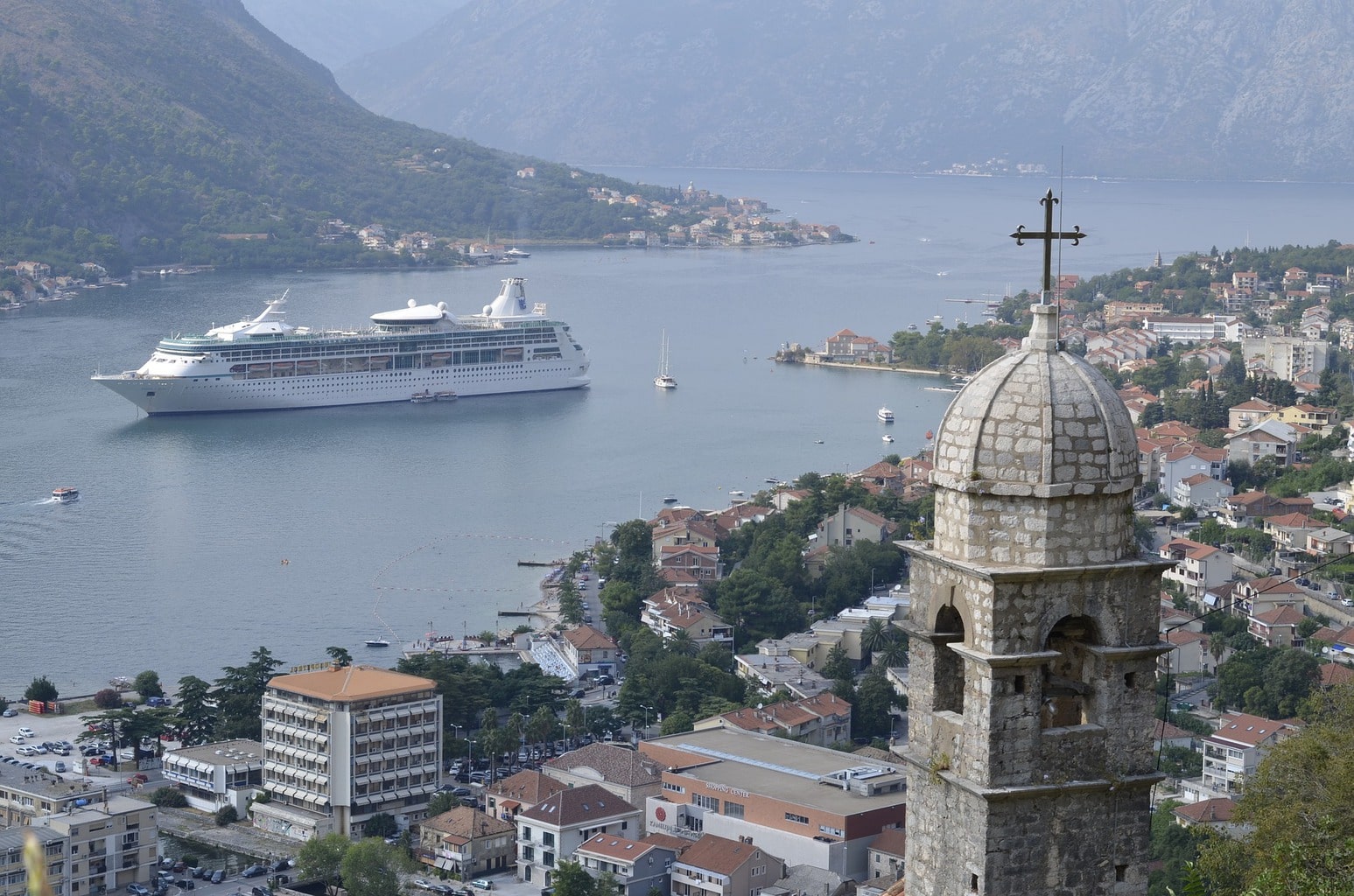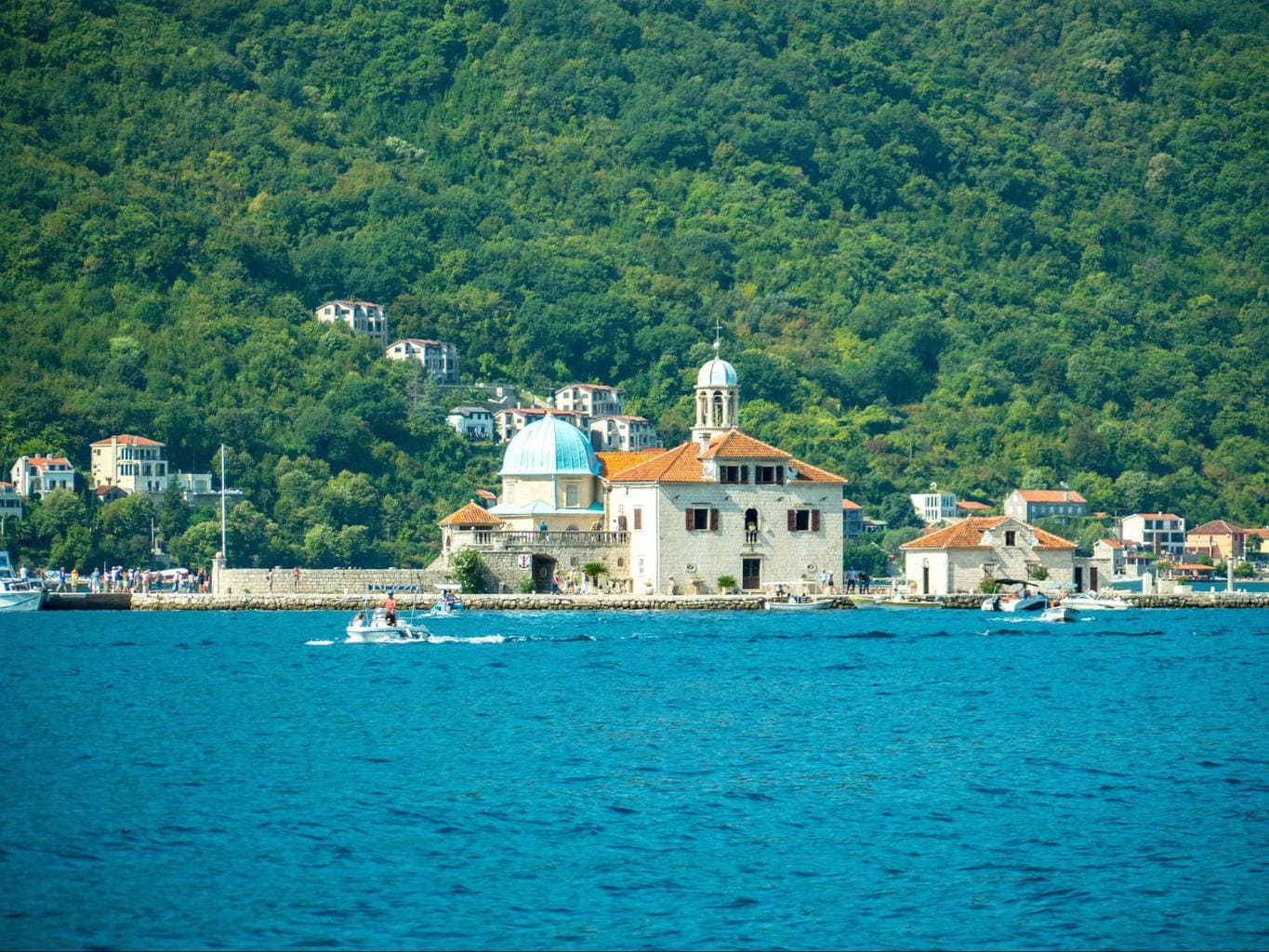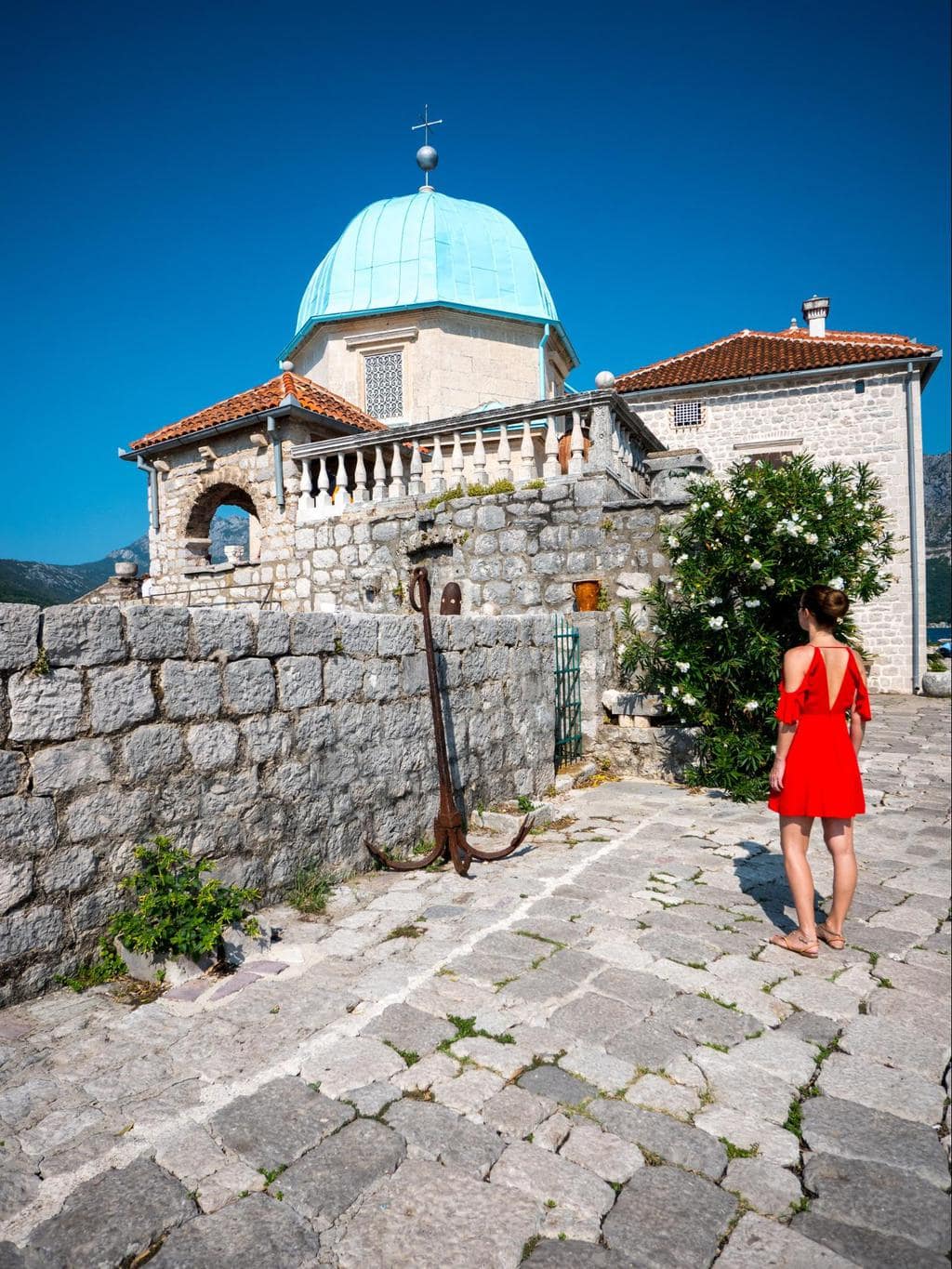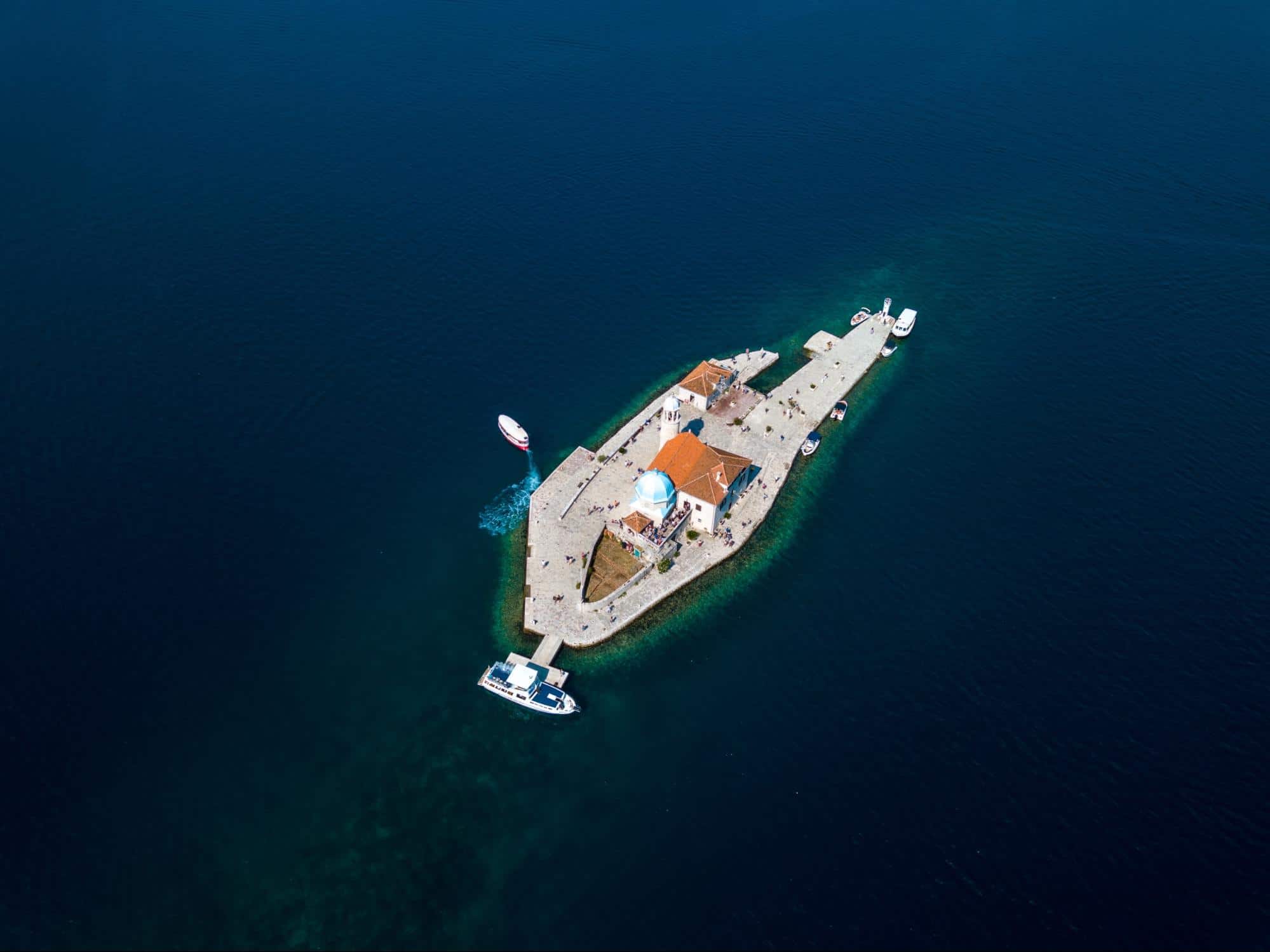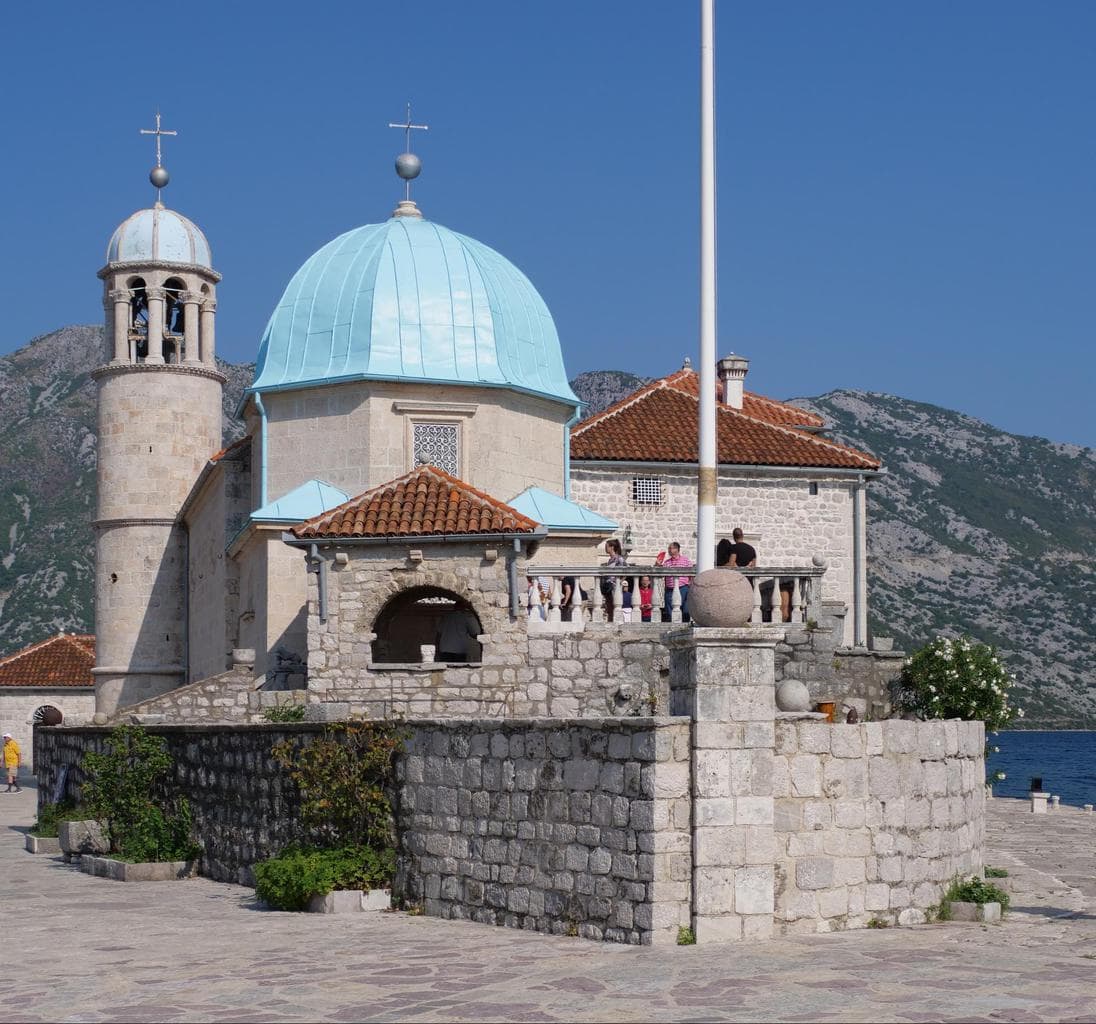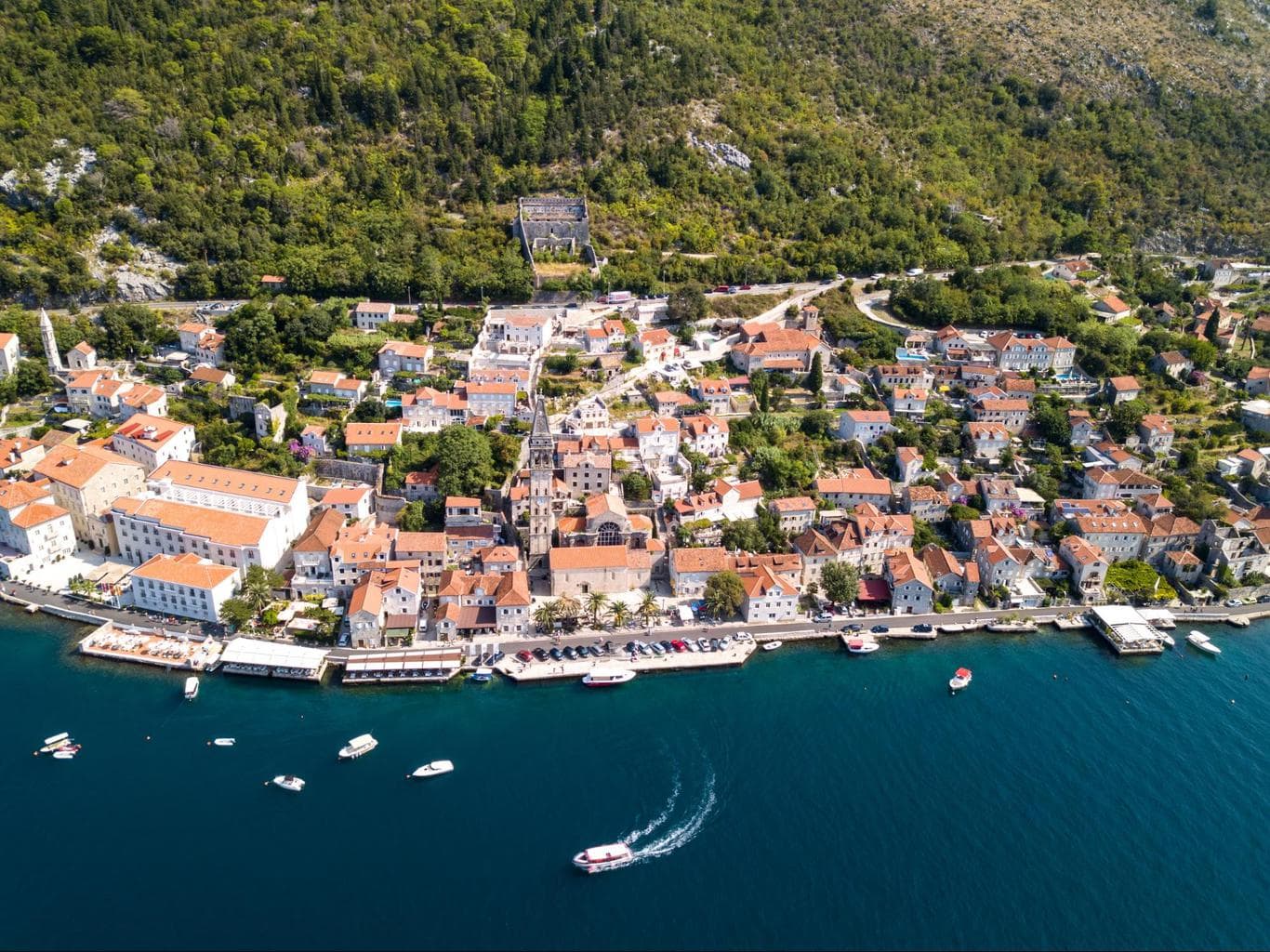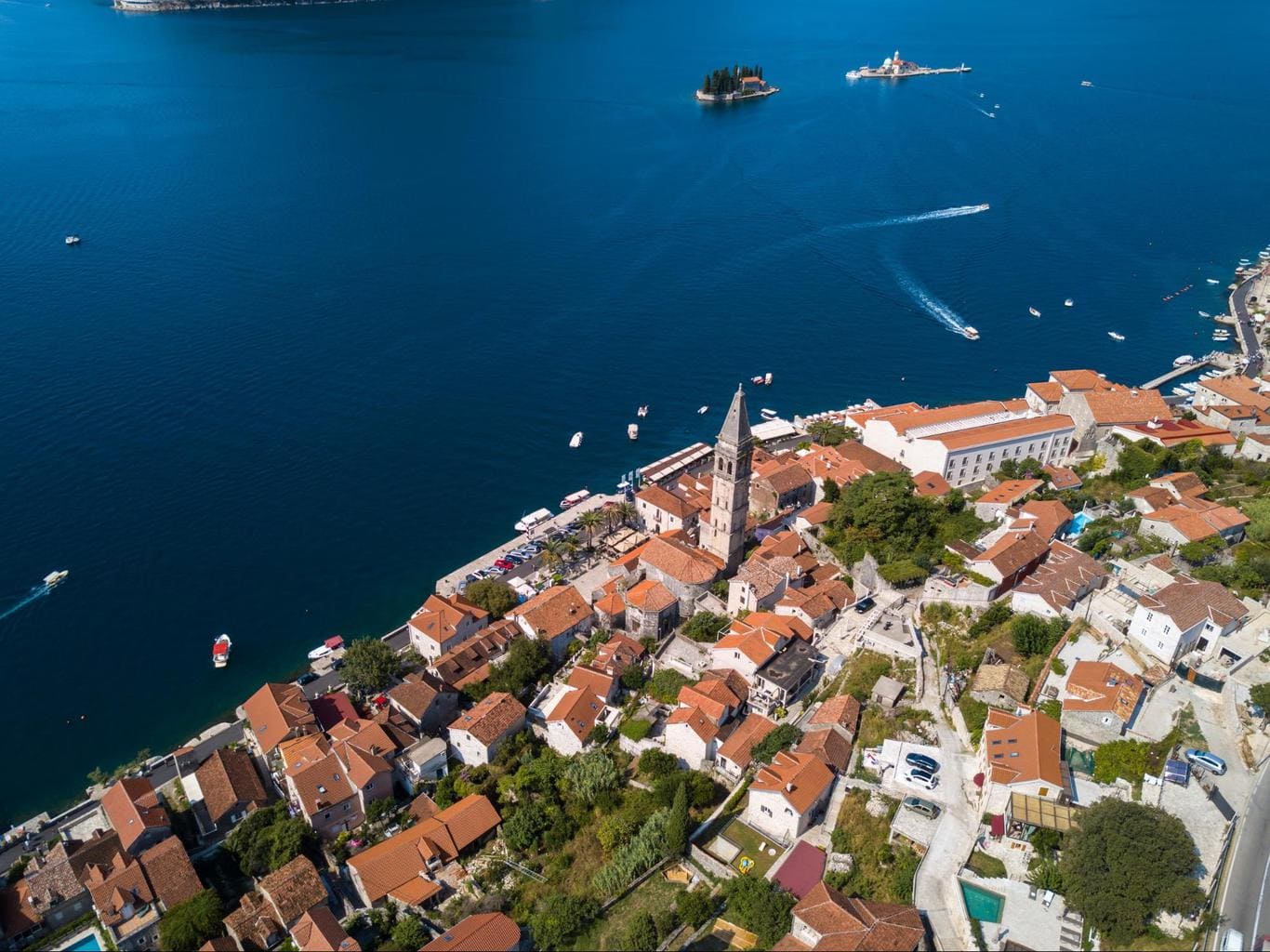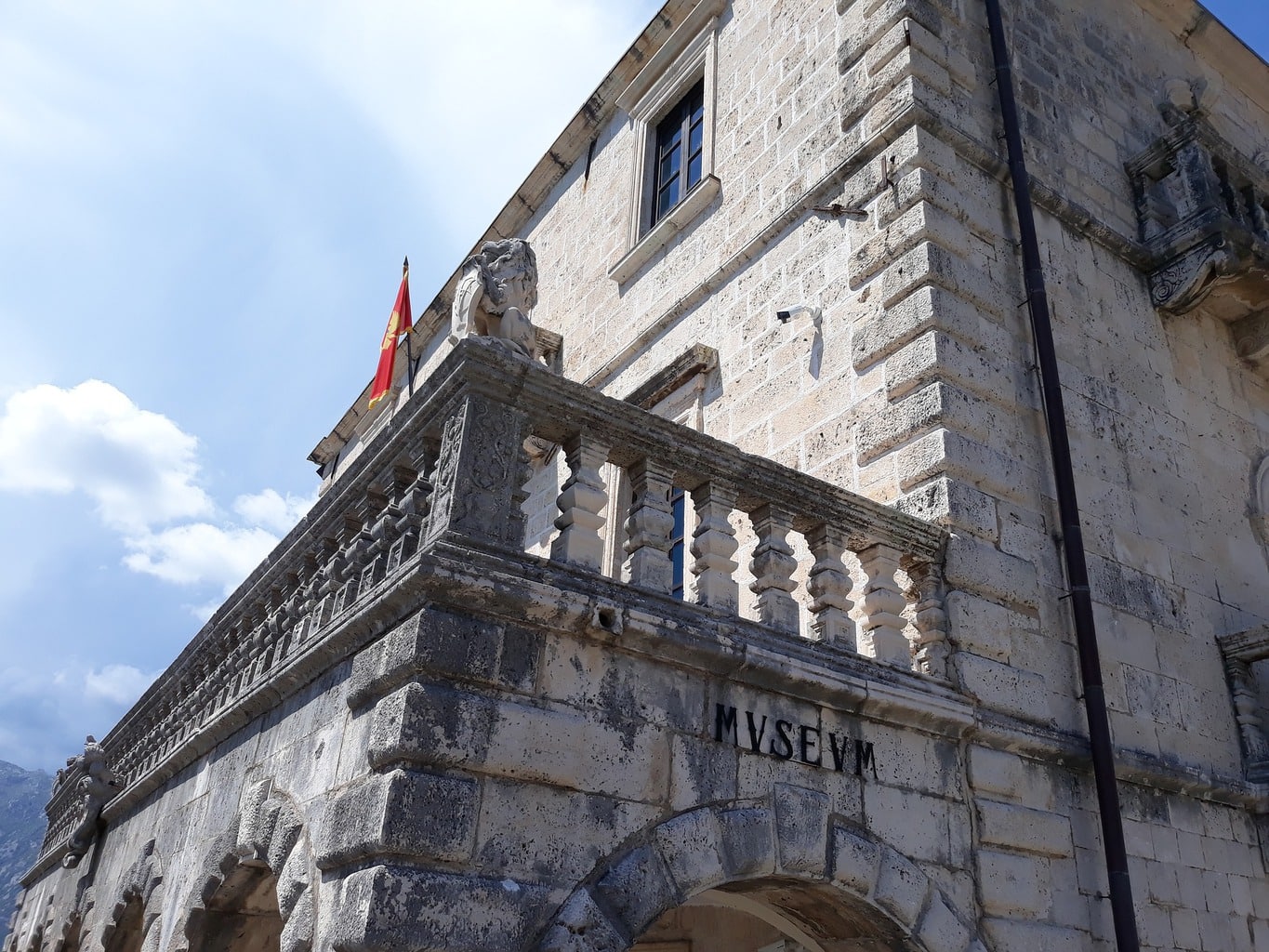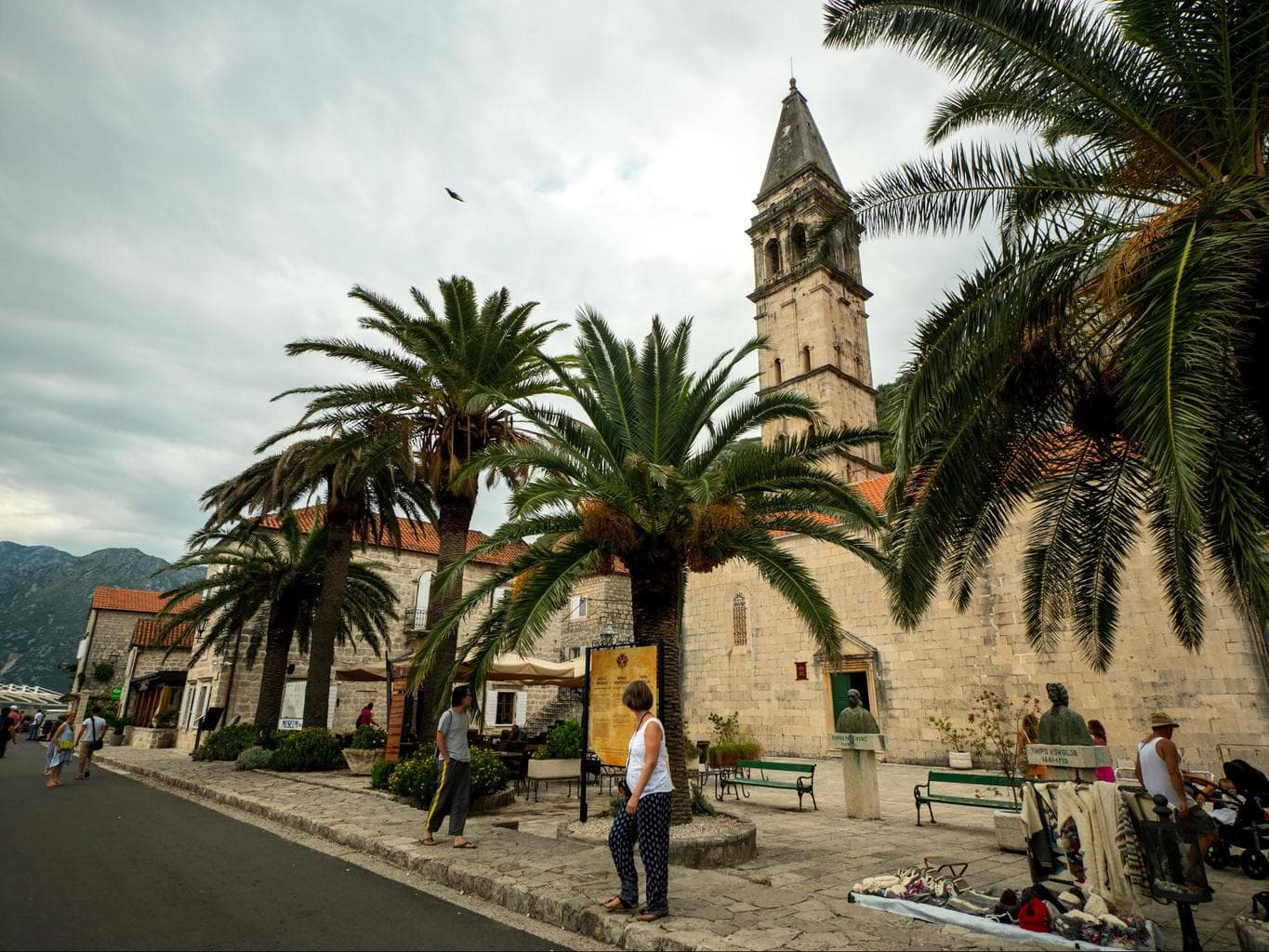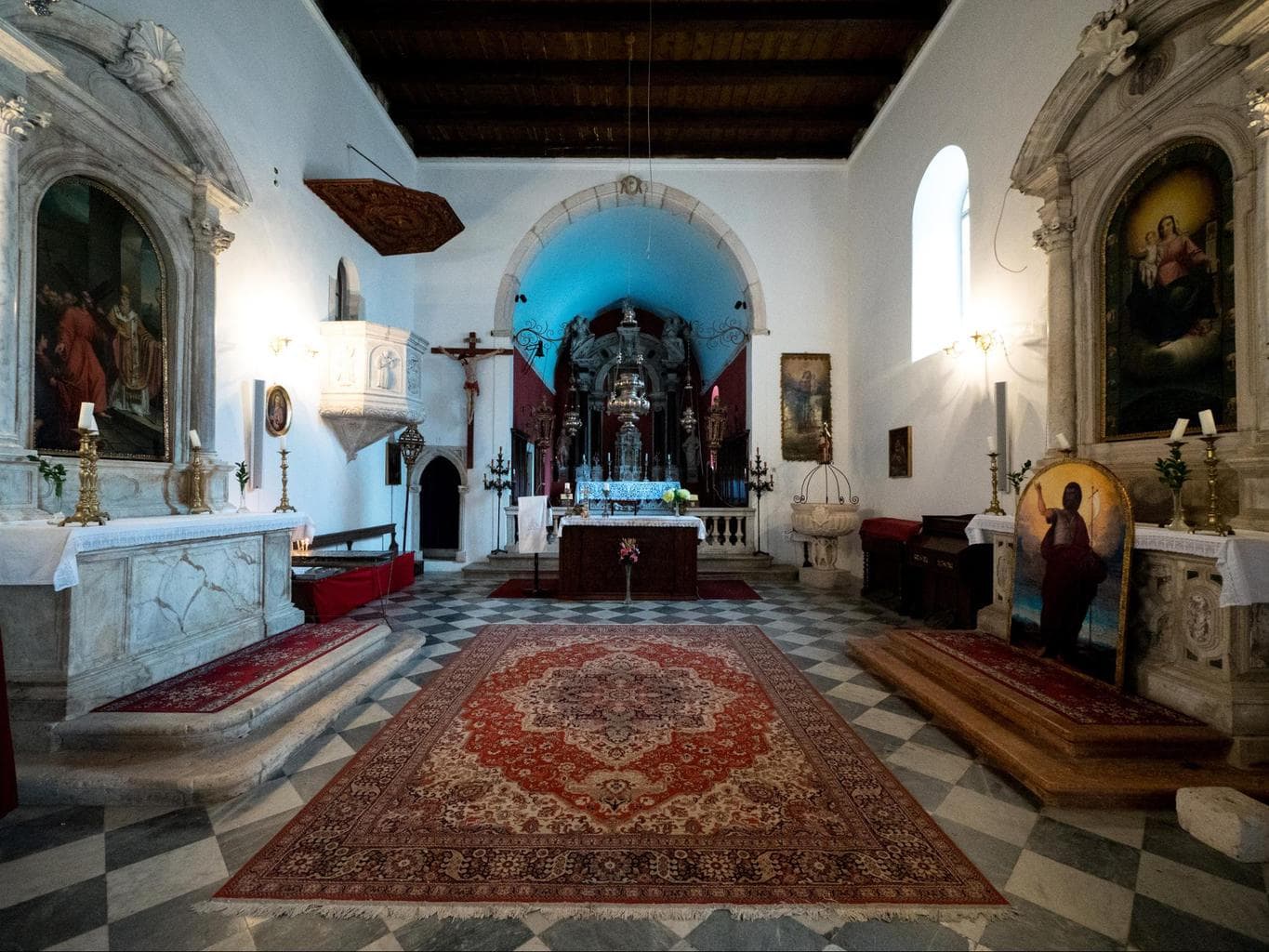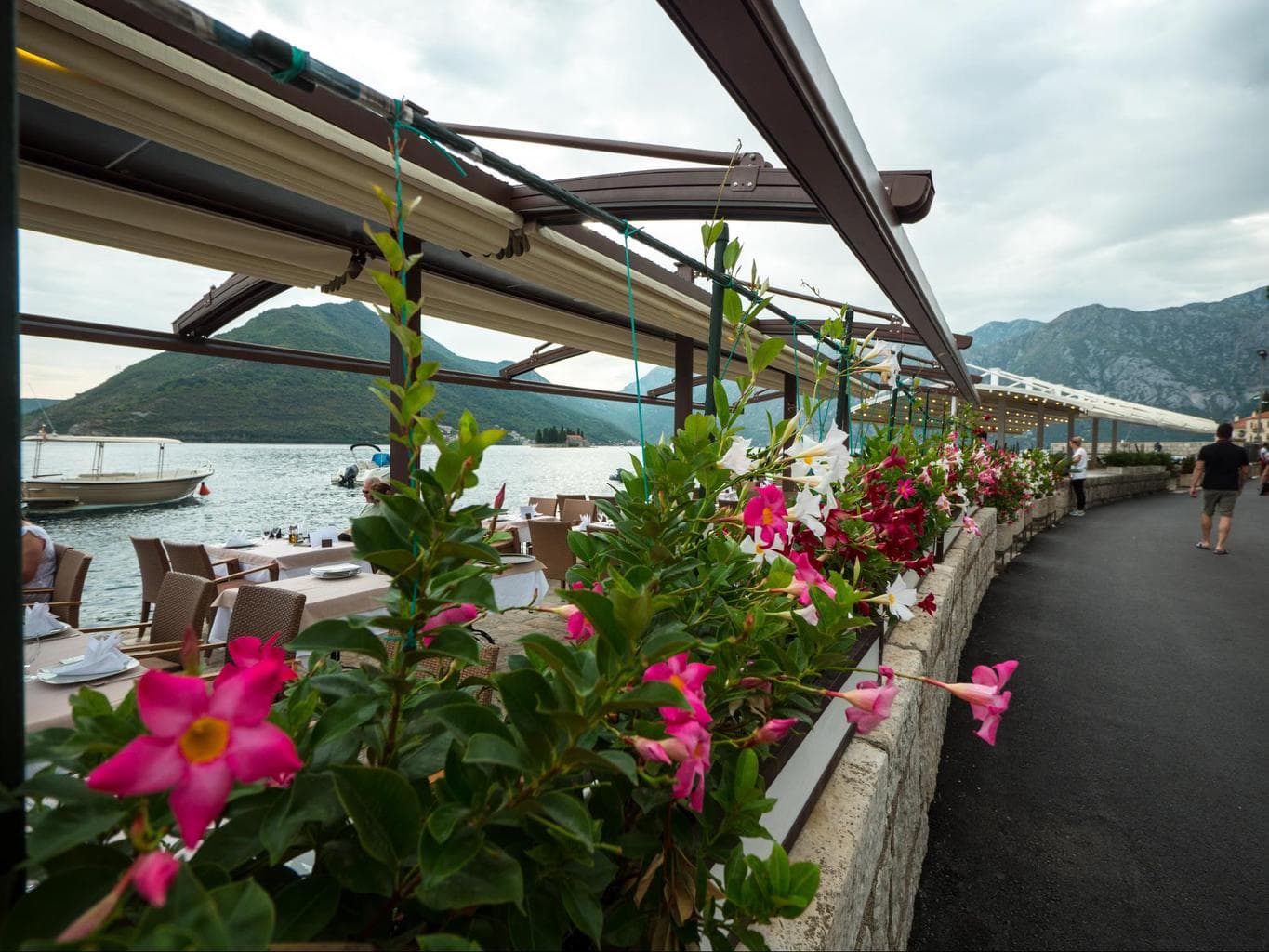Kotor has recently become all the rage among the savvy traveling community, especially those in search of an alternative to crowded Dubrovnik who love the smaller and equally quaint UNESCO-listed fortified city and the many things to do in Kotor.
While the majority of the visitors come here to spend one day in Kotor only, I decided to spend a few, sleeping in the old town and enjoying the quietness that arrived when the cruise ships left every evening and trying to figure out what to do in Kotor for more than a few hours. And even after my idyllic stay at Aman Sveti Stefan I was not disappointed.
Because of the extended time I spent here, you will not only find the most popular things to do in Kotor on this list but also a few insider tips that escape the day trippers, starting with the best tip I can give you: spend at least one night in the city, the streets come alive with a fairytale romanticism when the sun goes down.
Use the map below to locate all of Kotor’s things to do. The town is tiny and pedestrian, but it is very easy to get lost in its maze like structure that makes all streets look the same, so use the map to find your bearings. If you are spending more time in Montenegro, use my travel guide to the country and its another for its beaches for additional information. Then go beyond the country on an epic road trip across Europe.
Climb St. George Fortress
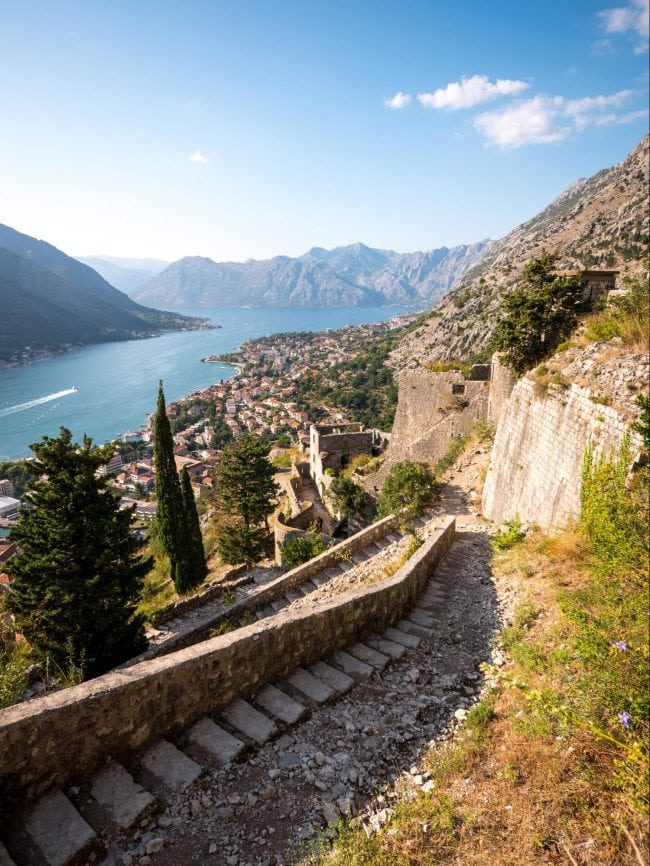
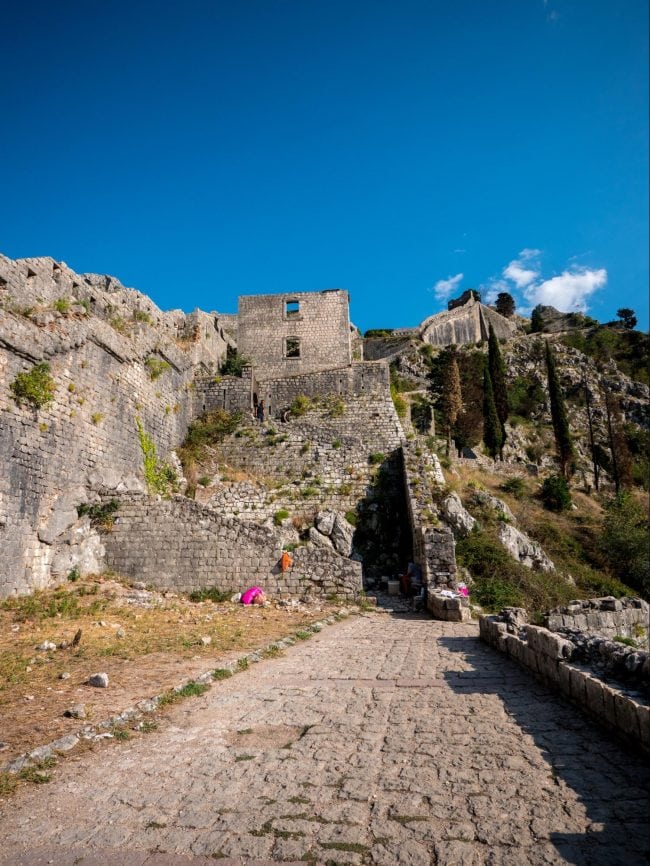
Admittedly, St. John’s Fortress, originally called the Fortress of San Giovanni, is the most well known of all the things to do in Kotor and a must see attraction for any visitor. You can’t visit Kotor and not get up to the fortress for a panoramic view of the bay below.
The path is about 1.2km long snaking up 1,350 steps for a total elevation of 260m above sea level. It is not a super hard ascent but you do need to be relatively fit, or take lots of breaks, which is easy since there are plenty of places for a stop to admire Kotor’s pretty streets.
There are a few different paths you can take, the most common one is the one marked in blue as it is the easiest, and then followed by the yellow one which will take you through the various castles and fortress points with views. No. 23 on the map is the top castle point dedicated to St. Ivan and built in the 14th to the 15th century.
Not much of the castle and the various parts of the fortification remains and only the ruins can be visited but the views, coupled with the ancient walls, make for a very scenic day.
There are a few entrances to the fortress, some of which are free, but the main one is from behind the church of St. Mary of the River, where you will get a nice brochure with some explanation in various languages and pay the 8 euro entry fee (this amount has been updated recently and it is no longer the 2 euros that once was).
You should wear appropriate shoes with grip, as the path is made of stones, sometimes irregular and quite slippery, and wear a cap and sunscreen as there is practically no shade until you reach the top. Depending on which route you take and how far up you go, you should budget at least half a day to explore the fortress area.
Top tip: Ask the locals about the daily sunlight or if you are staying in Kotor for a few days, pay attention on your first morning. The path up the fortress is against the mountain side so if you go early in the morning you may be able to ascend when this side is still in the shade.
Walk the city walls
Aside from the fortress and walls that run on the mountain above the city, Kotor is a fortified old town surrounded by a mote on both ends and facing the sea. One of the most romantic things to do in Kotor is to simply stroll along the outer walls of the city at either end.
The side that is closest to Perast has a pretty tower and a water-filled mote that makes for not only lovely pictures but also a fairy-tale moment that can take you back to the time when the area was a thriving port with the comings and goings of ships and trade.
Enter via the Sea Gate
The most common entrance to the city of Kotor is via the Sea Gate which bears the shield of the Venetian Republic on the top and is the entrance used by the cruise ships which are docked right in front.
This entrance is also the way into the lively Square of Arms and The Clock Tower and you can climb up the walls from behind and have elevated views.
St Tryphon’s Cathedral
The most important religious building in the city is 12th century St. Tryphon’s Cathedral, a must see attraction and usually topping the list of things to do in Kotor.
St. Tryphon is the local saint patron of Kotor and was a martyr in the 3rd century AC whose cult came from Asia in the 9th century. The current cathedral is erected where there was once a smaller religious building devoted to the same saint called St. Tryphon’s Martyrium and which contained its relics.
The former building was constructed by a local nobleman in the 9th century and was Kotor’s first church. St. Tryphon’s remains were only discovered recently.
The cathedral follows a mix of Romanesque and Byzantine styles with three naves, a dome and three semi-circular apses. The frescoes inside the cathedral were made on the 14th century by a group of Greek painters and are Gothic in nature.
While today’s building is the same that was erected in the 12th century, it has been renovated many times and its present day Baroque appearance dates back to the 16th century. The earthquake of the 17th century destroyed most of the cathedral and the bell towers had to be replaced by Baroque ones and the facade’s arched balcony added.
The cathedral’s Reliquary was decorated by a wealthy couple in the 17th century by the hands of a Venetian sculptor over a four year period. The space contains a central sarcophagus with the relics of St. Tryphon held by two angels and lots of marble. You can see this through the locked iron gate.
The cathedral’s last restoration happened after the 1797 earthquake which badly damaged it. It took 17 years to bring it back to today’s appearance.
As you walk towards the back and up to the first floor museum you will pass by the Reliquary and then enter a small religious museum with objects and artefacts. The best part is the opportunity to walk outside and onto the balcony that is above the main entrance from where you can have a nice panoramic view of the square below.
St. Luke’s Church
There are a lot of churches on Kotor and you can’t walk 100m without at least stumbling upon a couple, but not all are of the same significance. St. Luke’s Church is a rather small but unique one and a fascinating example of the city’s mixed heritage, making it one of the most interesting places to visit in Kotor.
The church was built in 1195 BC in the Romanesque style but St. Spiridon Chapel and the iconostasis are from the 18th century. But go inside for a real treat: a double altar which was alternatively used for both Catholic and Orthodox services for a century.
It is perhaps this double religious value which has helped it survive all of Kotor’s devastating earthquakes and coming out practically unscathed.
The Church of St. Nicholas
This Serbian Orthodox Church is one of the most recognizable landmarks in the city because of its colorful Serbian flag hanging from the facade and its beautiful iconostasis.
Its location, standing tall above Kotor’s rooftops at the end of St. Luke’s square near St. Luke’s Church in what appears like a cul-de-sac, only gives it more of a dramatic look.
In all the ancient monuments and churches in Kotor’s old town, this is a relatively new church which was built at the beginning of the 20th century after a previous one burnt down. In the sea of red roofs that make up Kotor, the large black dome of St. Luke’s makes it quite unique.
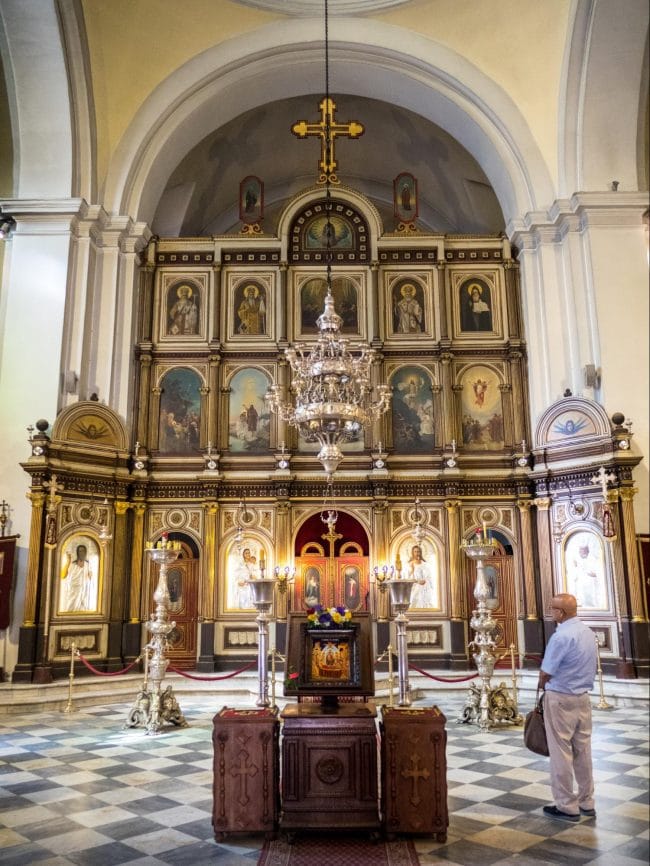
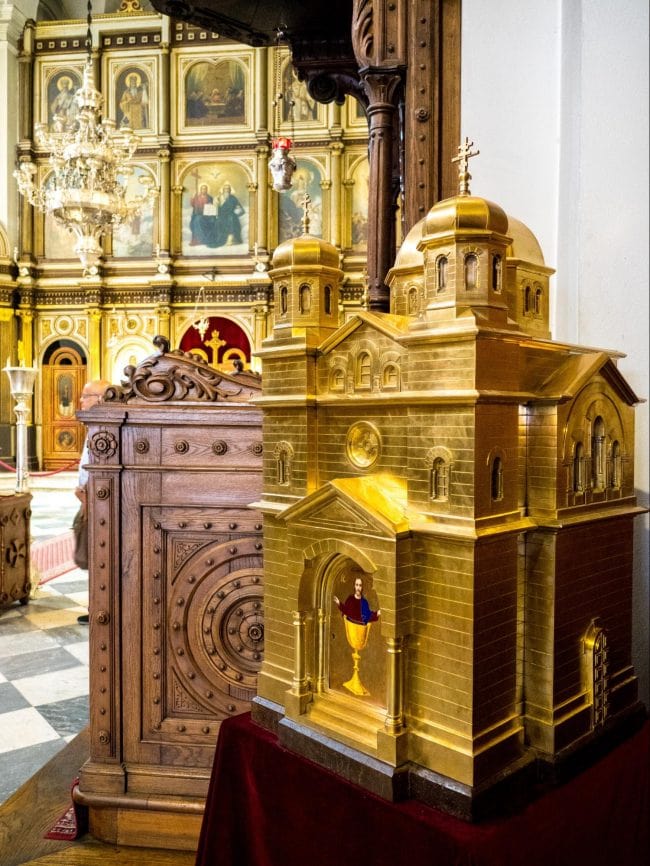
If you go inside you will find an intricate and large iconostasis made by a Czech painter and a golden replica of the church.
St Claire’s Franciscan Church
The 14th century Romanesque Catholic church is quite unassuming from the outside but hides a very intricate Baroque interior with over the top columns, altars and shrines. The church is attached to a Franciscan convent.
Church of Our Lady of Remedy
This 17th century Catholic church has the best views in Kotor and should be part of your hike up St. John’s Fortress as it can only be reached on foot through the steep steps that make the ascent.
The church has an altar and is pretty small but a preferred pilgrimage place for many who come here to light candles. Take a short break on your way up and enjoy the views before Kotor becomes too far away to see the details.
Maritime Museum of Kotor
The Maritime Museum is an interesting stop and one of the best things I did in Kotor. You might be surprised to hear that a maritime museum can be fun and interesting but actually it was.
Kotor being in such a strategic location in the Bay of Kotor means it was the prized possession of many of the regional powers in medieval times and the centuries that followed.
The locals, and the attackers trying to make incursions in the area, all arrived by sea and so the city has a long tradition as a port and as a maritime enclave.
The Maritime Museum is located inside one of Kotor’s palaces which used to belong to the Grgurina family and is split across two levels, the first floor containing almost all the exhibits and objects. The museum was founded in 1880 by the Boka Maritime Fraternity and it has been open to the public since the beginning of the 20the century, expanding as time went by.
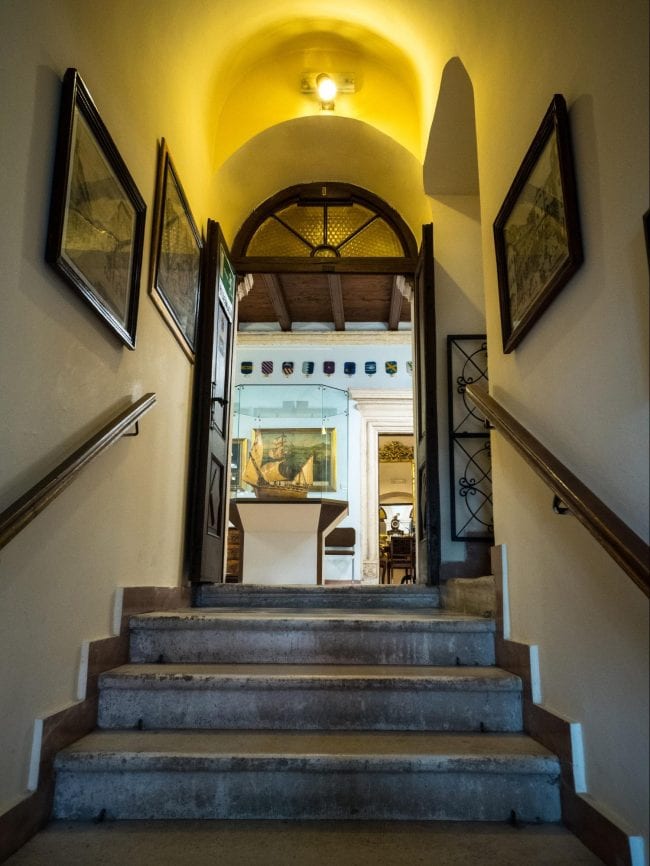
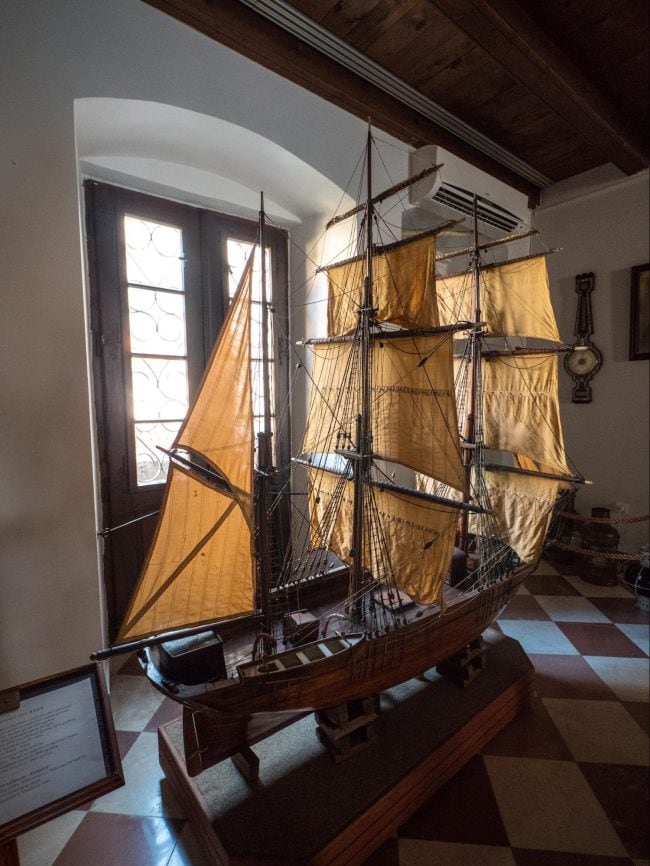
Through the several rooms on the first floor you will find paintings of famous characters of the time, from nobles to captains of the fleet, to Emperors, heads of state and other remarkable individuals of the time, and even some famous pirates.
The other great gems in the museum are the replica model ships that are on display behind glass throughout. You can even find a ship that participated in the 16th century Battle of Lepanto. The museum also includes rooms where you can see clothing of the time and furniture.
As the Bay of Kotor was also the stage for some of the most important battles of WWI and WWII, there are exhibits devoted to the wars including a model of the war cruiser from WWI.
Lastly, there is also an entire room devoted to weaponry such as swords and guns. The electricity went off while I was in that room which gave it all a very spooky ambience.
You can visit the museum on your own, as most of the exhibits have English explanations, or take the free audio guide available which has detailed explanations on each object lasting well over an hour.
The spoken version is pretty similar to what is written in the plaques of each model ship and painting but has the extra charm of music and voice impersonations. More information here.
Shop at an old cloister in the Kotor Bazaar
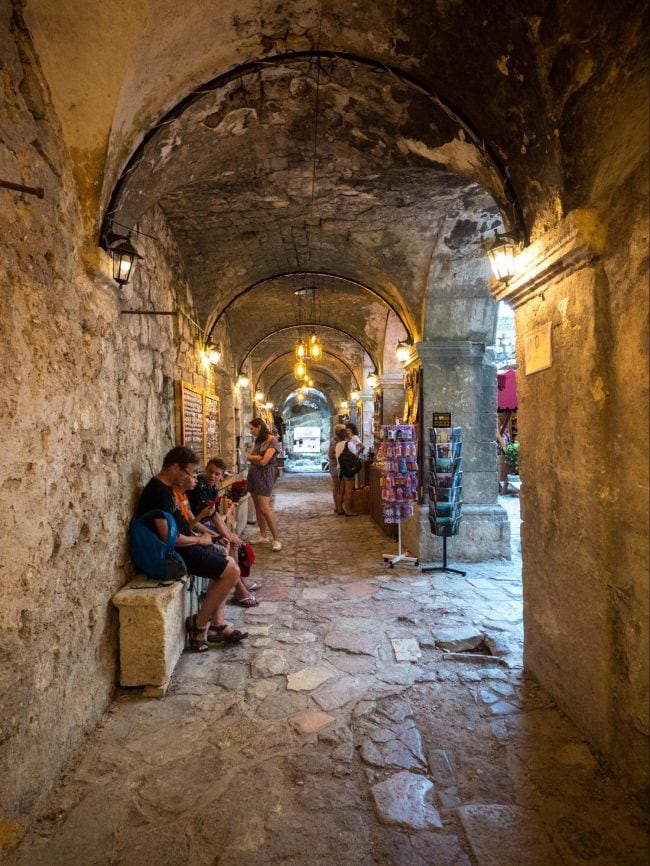
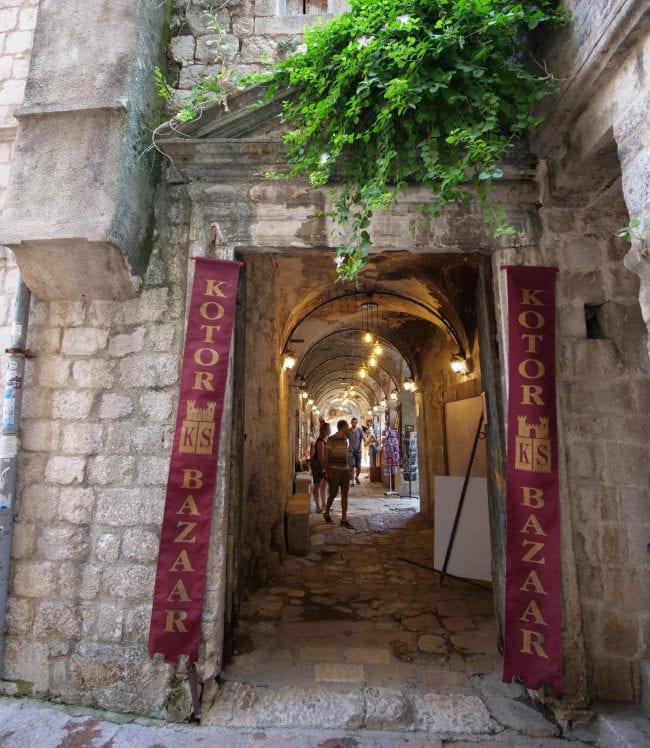
There are lots and lots of shops selling all kinds of souvenirs in Kotor and while there are still some residents who live in the city and need basic services such as grocery stores and pharmacies, most of the old town is devoted to tourism services. You will not be short of options to spend money on a cute cat themed item or a painting.
For something a bit more interesting, head to the Kotor Bazaar, a sort of shopping hall housed in an abandoned Dominican Monastery where they sell the same as everywhere else but with a bit more ambience.
You can also pay a fee to dress up like medieval warrior or even take your chance at throwing some arrows with a bow. It all feels a bit like a modern version of a medieval market.
Laugh at the Cats Museum
This funky and pretty unique museum has no real cats but instead, it showcases a huge collection of cat-related and cat-themed materials such as paintings, postcards, books, stamps, coins, etc. that contain cats in them.
The museum was started with the private collection of the Countess di Montereale Mantica who donated a large amount of materials, and has expanded over the years.
If you are as crazy a cat lady or gentleman as the founder, you can make a donation and receive daily photos by email of the museum’s pieces. The museum also helps to take care of the local cat population which, in Kotor, is numerous. More info here.
The Clock Tower
The early 17th century clock tower of Kotor is located right at the entrance to the city in the Square of Arms and is fronted by a stone pillory, the structure with three holes for head and arms used to trap prisoners and parade them for all to see.
The clock tower has survived the many earthquakes that hit Kotor but required renovations. The movement also caused it to mildly lean, like Pisa.
Take a break at the Hippocampus rooftop
Kotor is not a city with rooftops, it also does not have tall buildings and the many churches are the ones seen above the rooftops of the houses. Unless you climb up St. John’s Fortress, it will be hard to see the city from above and, when you do so, you are already quite far from it as the path zigzags up the mountain.
You can enjoy an interesting and unique perspective of the city by taking the lift to the rooftop bar and restaurant on top of luxury boutique Hotel Hippocampus which is housed in a 17th century palace. You can look down on the narrow lanes of the Old Town from here and also see eye to eye with the bell towers of some of the churches.
The small rooftop terrace is a good place to escape the tourist flow at lunch time, as the area is shaded with large umbrellas, to enjoy a drink at sunset when the city is becoming a bit quieter or to share a candlelit dinner. The drinks list is extensive but you come here for the location.
Pst, Hotel Hippocampus is also my choice of hotel in Kotor for its romantic setting inside an old palace as well as its modern golden and violet shades blending in with the stone walls and the wooden floors. You can book your stay here.
Admire the Gurdic Gate at night
Although most people will access Kotor via the Sea Gate, there are other ways into the city and one well worth the trip is the one at the farther end, Gurdic Gate, especially at night.
The gate receives its name from the stream that flows into the mote and as opposed to the main Sea Gate, the access here is done via a small bridge, just like one imagines a medieval fortress to be like.
At night, when the city lights and the wall reflect on the still water of the mote this is as romantic as the moment can get in Kotor. So sit down and enjoy the peace that comes with the evening, when the tourists leave Kotor.
Relax at the Square of Arms
This is the largest and most scenic of the squares in Kotor and takes its name from the Venetian times when weapons and arms were stored here. One of the best things to do in Kotor is to simply sit down at one of the many cafes’ outdoor tables and people watch.
Kotor sees an incredible amount of traffic in the summertime when its arteries become clogged with tourists descending from the large cruise ships or on day trips from Dubrovnik, so if you need to take a break, this is a good place to be entertained by the constant flow of people.
I would recommend the Vardar Hotel (I actually stayed there) which has large umbrellas to protect you from the blaring sun and is a bit more secluded from the main thoroughfare that comes through the Sea Gate. You can book your stay at Hotel Vardar here.
Photograph the Beskuca Palace
Beskuca Palace is one of many medieval palaces in Kotor that have yet to be converted and appears to be for sale. The palace belonged to a noble family but it was given to the local government in the 19th century.
The palace cannot be visited, unless of course you are interested in buying it, but you can admire its green portal which is intricate and quite beautiful. It is also the reason why I stopped for a photo before even knowing what I was looking at.
Sample local Montenegrin wines
Old Winery Wine Bar is a great place to come and sample Montenegrin wines. While the country makes a mean red wine with the local vranac variety and has a few notable wineries, it is hard to find anything other than Plantaze wines, the largest winery in the country and owned by the government.
It is even harder to be able to try different local wines by the glass and this makes Old Winery Wine Bar even more special. Couple the extensive menu with a team of knowledgeable staff members ready to suggest a few options or tell you more about each wine grape and winery and you have a semi wine tasting experience like no other.
You can take a seat at one of the outdoor tables which are great for people watching, or head into the dark bar which feels like a cellar and is dotted with barrels turned into tables.
The bar also serves smoked ham and cheese to pair the wines so you can make it a meal and try a few of the wines. There is also live music several nights a week which you can find out about on their Facebook page.
Take a boat cruise around the Bay of Kotor
One of the most popular things to do in Kotor is take a day trip around the Bay of Kotor on a boat. There are boats of all sizes and all types of tours available so your perfect choice will depend on how much time you have and what you like to do.
You can book a private boat tour of Kotor that goes by Our Lady of the Rocks and a swim at the Blue Cave online here.
Have a refined dinner by the water
If the constant stream of people in the Old Town is getting to you the easiest thing to do is to get out of the old city and simply walk along the water and towards Galion. This is a refined Montenegrin restaurant where you can sample a lot of the typical Montenegrin food in a romantic setting.
Located half in an old stone building and half over water, Galion is probably the most premium of the restaurant options in town, maybe even in Montenegro.
You should try to book a table in the evening and by the water’s edge from where you can look out onto the illuminated walls of fortified Kotor running all the way up the mountain. Inside the building, the atmosphere is equally romantic, minus the view.
Sitting on a table for two with impeccable white tablecloth you can enjoy premium seafood and fish served by the expert staff. We ordered the usual gravlax which we became huge fans of in Montenegro, and the grilled octopus which was a second close. Grilled fish followed.
The restaurant is owned by the same company as Vardar Hotel, which I stayed at inside the Old Town. Book here.
Stuff your face with grilled meat
Montenegro, like the rest of the Balkans, has a great love for grilled meat and it is easy to find cevlapi, the local name for kebabs and grilled meat, across menus. Outside Kotor’s old walls there is a family-run hyper laid back and casual place serving huge portions of grilled meats that is a local’s favorite.
No matter who you ask for a place to eat in Kotor old town, they will all refer you to Tanjga where you can pick your meat from the fridge in front of the hot coals, choose your sides and then wait for it to be cooked to order.
You can take one of the seats in the storefront area, where the meat is being cooked, or go to the quieter shaded patio at the back where the set-up is in large sharing tables and you can chat with other meat lovers.
For an extra special day in Kotor, come here to pick your lunch, get it to take away (they can wrap it properly) and take it up St. John’s Fortress for a picnic with views. The portions are so huge that even with the hike we still had plenty of food left which we ate back at our hotel.
See massive cruise ships
This may sound like a really strange thing to do in Kotor but since this tiny place is a massive magnet for cruise ships which dock right by the city, seeing them from up close is quite a sight to behold.
In the 2018 peak summer and spring months there were dozens of ships carrying thousands of people arriving in Kotor, on some days there was more than one ship docking at the port. The effect is obvious when you are in the city and all of a sudden, hundreds of people descend on the tiny streets.
If you walk up the fortress path when one is docked in town, the view of the old city against the hyper large modern cruises creates a picture of starking contrast.
Visit Our Lady of the Rocks
Taking a small boat to visit Our Lady of the Rocks has to be the most popular thing to do in Kotor after the fortress and the old town. This picturesque and beautiful baby blue roofed church standing on an artificial island is a favorite among visitors.
Our Lady of the Rocks also has a very interesting story. The island the church stands on was built over centuries by the local fishermen who would drop rocks in that specific spot every time they passed by. The spot was chosen after finding an image of the Virgin Mary by two brothers who decided to build a small Orthodox church on site.
The island the church stands on has expanded over the centuries with more rocks piled every year on the 22nd July in an event called fašinada. The small Orthodox church was enlarged and turned into a Catholic one when Perast came under Venetian rule in the 16th century.
Inside you can see the image of the Virgin Mary, called Our Lady of the Rocks, and also a small museum. Most interesting is the tapestry woven by a local woman from Perast who became blind in the 25 years that it took her to make it.
She was longing for her fisherman husband to return and started to make this with silver and gold threads. If you look closer to the hair of the angel you will see it’s real human hair, hers.
To enter the church you will have to pay a small fee and cover your shoulders and knees so don’t come in spaghetti straps and shorts.
You can take a short boat ride from Perast where fishermen are at the ready to take anyone for a couple of euro, and then tell the boatman to return in 15 or 30 minutes or however long you prefer, just make sure you remember who your boatman is!
The other way to visit is via a longer Boka Bay tour which usually covers the island. If you don’t mind splurging, nothing says luxury Adriatic vacation like a private boat for four hours just for you, you can book it here. Or make it a shorter 1h ride for a more affordable price with this option.
This group tour also has a stop at Our Lady of the Rocks but also other places, like caves and swimming spots, so you can make a full day of cruising around the bay.
Explore Perast’s many mansions
Perast was my favorite place to visit in Montenegro and makes for a lovely trip from Kotor as it is just 15min away by car. There are also buses that connect the two.
The lovely fishing village turned tourist hotspot is the most romantic spot in the Adriatic coast. Filled with palaces, churches and old mansions, Perast has an air of nobility and class hard to match anywhere else. And because of its sandwiched location below the main road, it has not fallen prey to unruly development and has kept its medieval feel.
While most people come to Perast just for a couple of hours to walk around the village and take a boat tour to Our Lady of the Rocks, a few luxury hotels, such as the Iberostar Perast, have opened in recent years in renovated old palaces giving you just another excuse to base yourself here instead of in Kotor.
When looking at the history of Perast, you see a pretty mixed heritage. The city was part of the Byzantine Empire, the Venetian Republic, the Austro-Hungarian Empire and finally part of Yugoslavia from the end of WWI with a brief period during WWII under Italian rule.
Because of this wealthy and notable past, Perast has 19 beautiful stone palaces, 14 churches and several well-preserved houses that seem taken out of Venice. The entire village is pedestrian except for a handful of cars from the local inhabitants, so leave yours outside and explore on foot.
Start at the entrance to the town from the parking lot and find the Museum of Perast first. This museum is housed in the stunning 17th century Bujovik Palace now a bit below street level and showcases the evolution of Perast through the centuries.
St. Mark Church is located around half way down the sea promenade right next to Smekja Palace, home of the Iberostars Grand Perast Hotel, and can be visited. Next up is the 17th century St. Nicholas Church. You can pay a small fee to go inside the back of the building to a sort of museum.
While summer months see this quiet town swell, tourists mostly come during the day and at night the village becomes a really quaint and peaceful place with a few seaside restaurants like Conte Restaurant where you can enjoy a romantic dinner for two.
- Check if you need a visa, get help processing it at iVisa.
- Never ever leave without travel insurance. Get affordable coverage from World Nomads or long term insurance from Safety Wing.
- I find all of my flights on KAYAK. Check their Deals section too.
- Search for all your transportation between destinations on the trusted travel booking platform Bookaway.
- I book all my day trips and tours via GetYourGuide, they are the best and their tours are refundable up to 24h in advance.
- Get USD35 off your first booking with Airbnb.
- Compare hotels EVERYWHERE at HotelsCombined and book with Booking.com.
- Compare car rental prices at Rentalcars.com

